On December 9th, Columbus Crew defeated Los Angeles and won the MLS Cup in a season that amazed everyone with the performance of this team, characterised by continuously striving for initiative and attack. Theirs is considered the most potent attack in MLS this season, with 79 goals.
To know more about the reason for this, we need to know the style of play of their French coach, Wilfried Nancy. He is 46 years old, considered young in this profession, and is currently in his second head coach job after having previously managed CF Montréal, where he had worked as an assistant coach and youth academy coach before.
He is distinguished in man management, dealing with players, motivating them and making the team one family, which reduces the pressure on the players outside the field and thus inside it to present this calm and beautiful football.
“We play such a unique style where Darlington Nagbe and I get the ball all the time and in the middle of the chaos and have to be like a cooling source for the team and a calming source and to control the rhythm and the tempo, and I think that’s not always easy when the game is going 1,000 miles per hour,” said Aidan Morris, Columbus Crew’s midfielder. “Lots of respect to Wilfried for giving me that role of being that calming influence.”
“It’s tough. I’ll have a great game, and he’ll come up to me and tell me something he wants me to do better. It’s like a father figure almost.” said Morris.
In this scout report, we will explain their tactics in the attacking phases, defending phases and transitions.
General attacking ideas
First, we should mention their main philosophy and formation and what they generally intend to do in the attacking phases. They prefer to use a 3-4-3 formation with three centre-backs, two wing-backs standing widely in the outer flanks, two pivots, and two inside forwards acting as two number 10s to form a box midfield and a striker, as shown in the first photo below.
They can penetrate the defending shape either by their box midfield in the middle or by forming triangles in the two wings. In all that, they depend on the defenders’ calmness and patience, along with their pivots to calm, contain pressure, and then pass correctly, breaking the lines.
In the case below, you can find a sample of that. When the pivot gets the ball, the other pivot moves vertically to open the passing lane to the outer flank, where the defending right winger has a dilemma of going to the wing-back or the inside forward. Hence, he opens the passing lane to the wing-back, who passes it to the striker, who comes to complete the triangle.
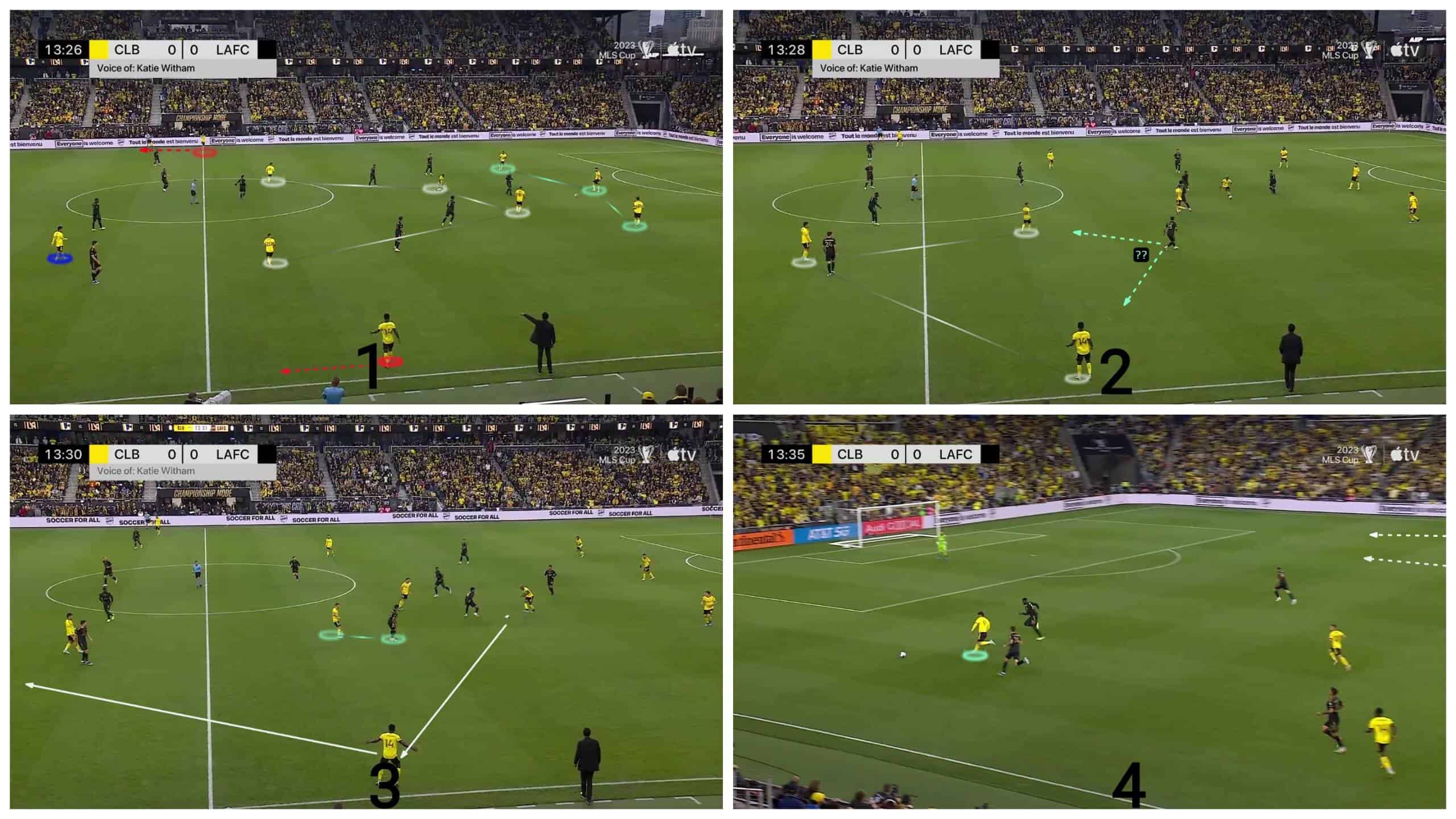
Their three centre-backs are adept at this style of play, especially in passing and dribbling, while being diverse. Malte Amundsen and Steven Moreira are the left and right centre-backs and frequently display great passing and dribbling skills for the level at which they play.
At the same time, Rudy Camacho is the central defender who excels at several different pass types and skills; he is exceptionally accurate and reliable on the ball.
Build-up and ball progression
They use the same shape in the build-up by exploiting the many options their box midfield provides. Then, the rotations and triangles come, so in the first photo, you can see the centre-back passes the ball directly to the right inside forward while the right centre-back runs to form a triangle with him and the right wing-back, as in the second photo.
The wing-back passes the ball to him while the inside forward runs to receive the through pass, as in the third and fourth photos.
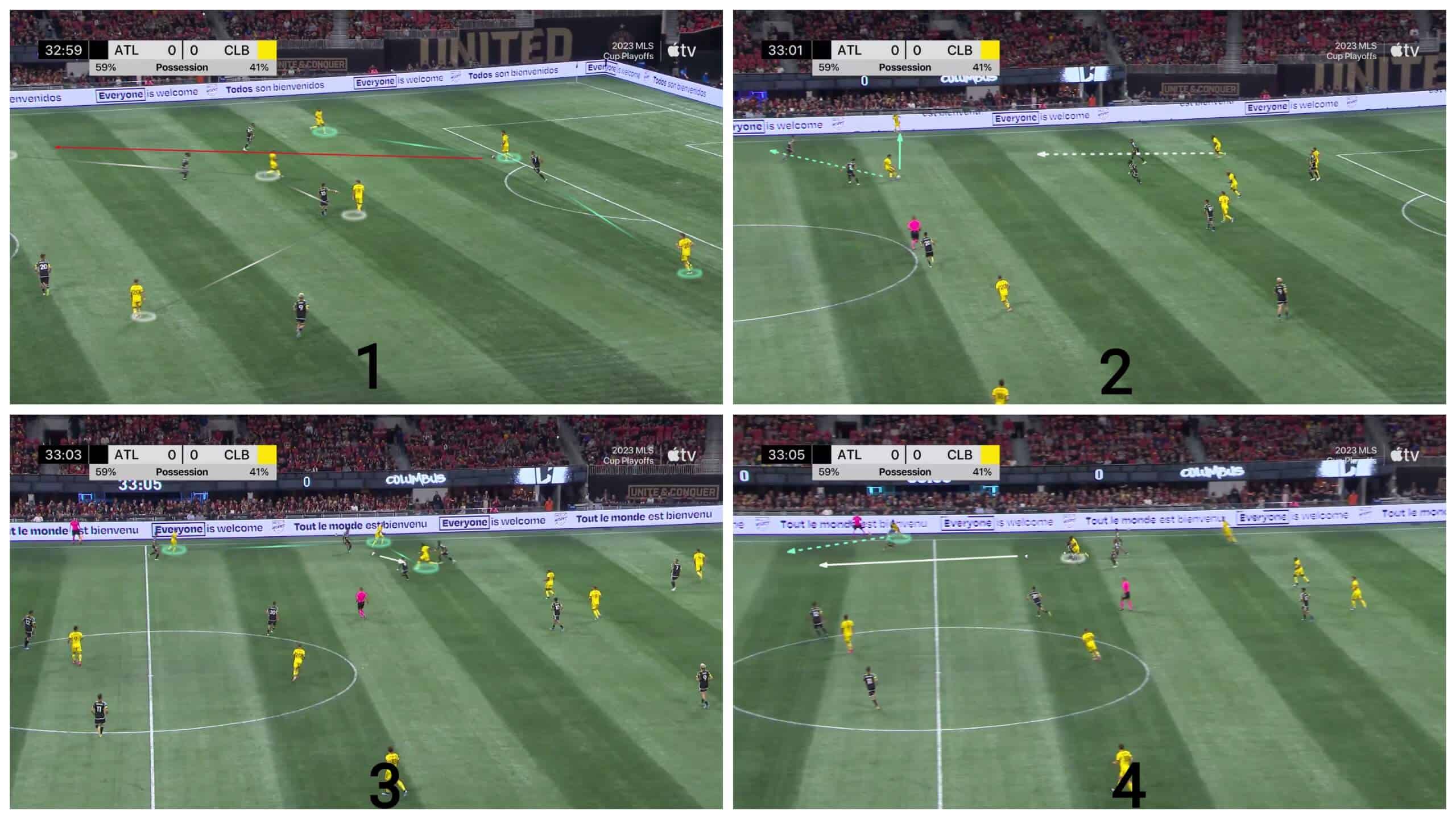
They exploit the numerical superiority they have to build up with five players, 3-2 shape, if the opponent presses by only four players in many ways, either directly pass to one of the two pivots, the free one, or by asking one of them to drop between the centre-backs to free the wide one, as in the case below.
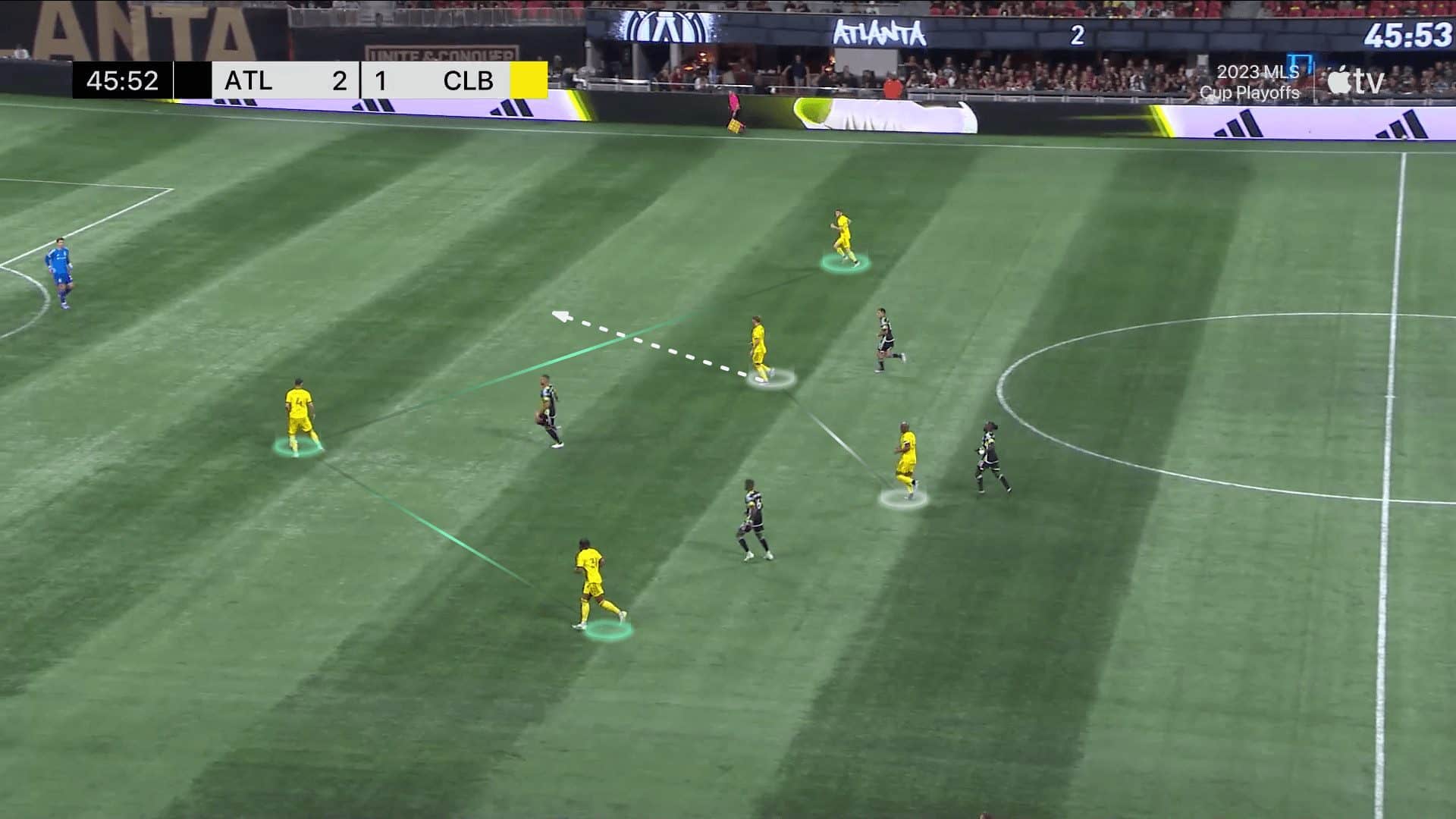
Here, the opponent’s forward chooses to press the midfielder, so the left centre-back, who shifted more wide, is free to receive the goalkeeper’s pass.
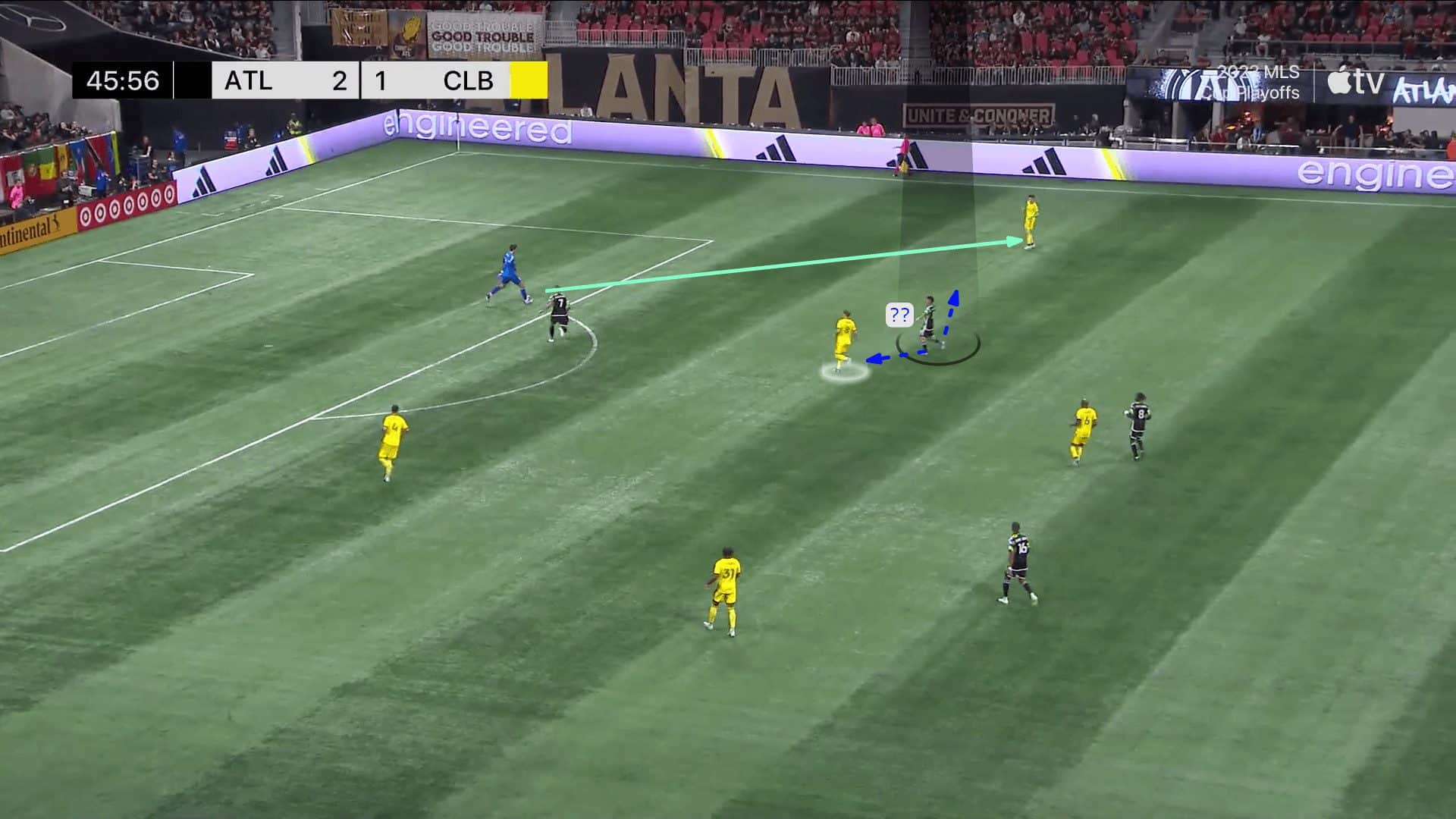
When the opponent’s press becomes more challenging, they have no problem making the wing-back, near the ball drop with the two inside forwards go near the ball, forming the same box midfield, leaving only the opposite wing-back and the striker on the other side, as in the first photo below.
In the second photo, the opponent presses with a 4-3-3 shape with the right midfielder forced to move forward to press the two pivots with the striker; the three forwards are forced to stand narrowly because of the three centre-backs and this 3-2 shape, so the passing lane to the right wing-back is open. The right full-back has a problem facing the right wing-back or staying with the right inside forward while the two other midfielders are fixed because of the other inside forward who comes to the ball side standing behind them.
The wing-back receives the ball, so the right full-back goes up, leaving the inside forward behind him, who will receive a through pass easily, as in the third and fourth photos.
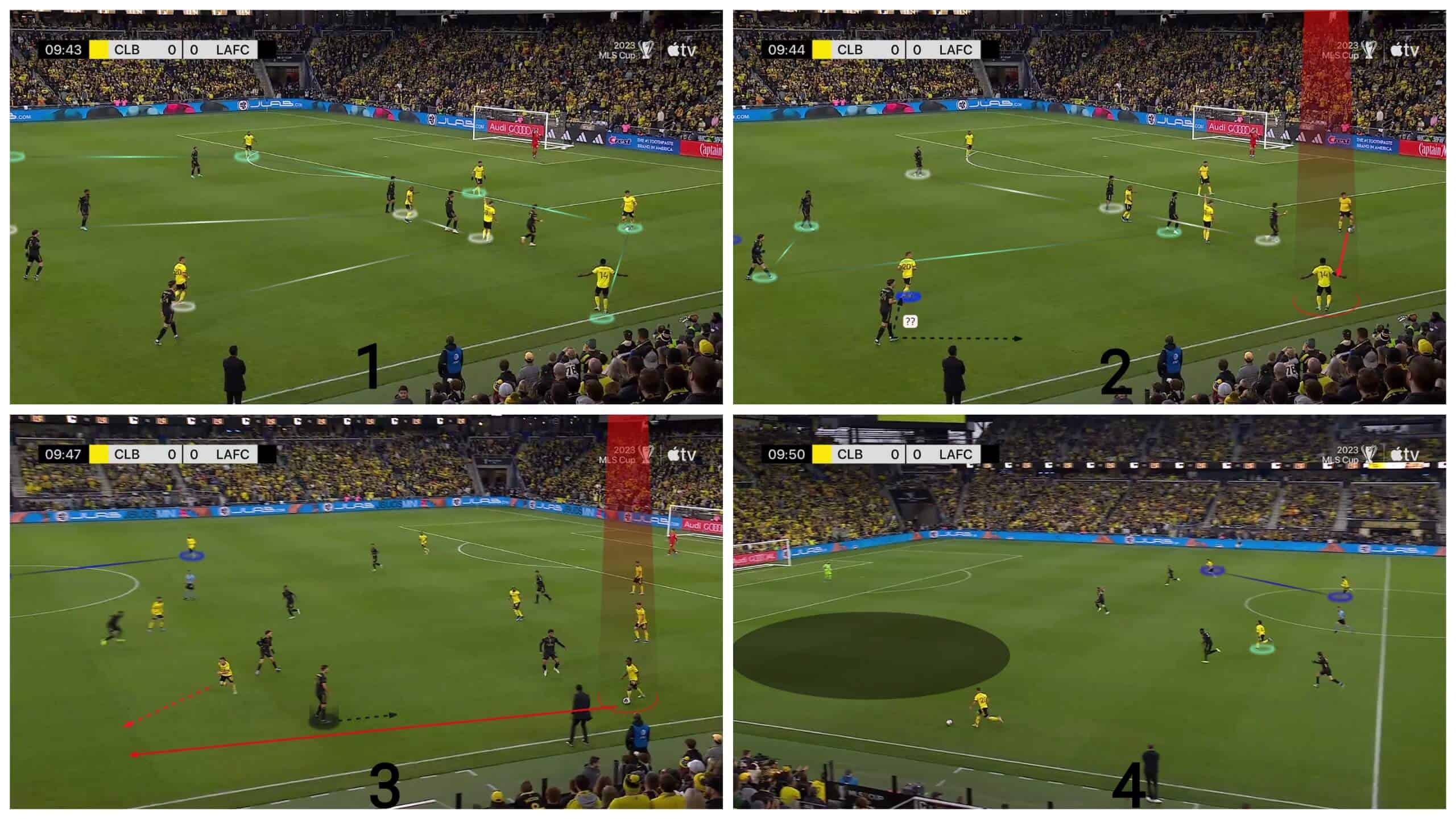
Some opponents have dealt well with this build-up scheme pressing by five players against this 3-2 shape, forcing them to pass to the wing-back while they perform the side-pressing having five defenders at the back, so they ask the left centre-back to go up chasing the inside forward, as shown below.
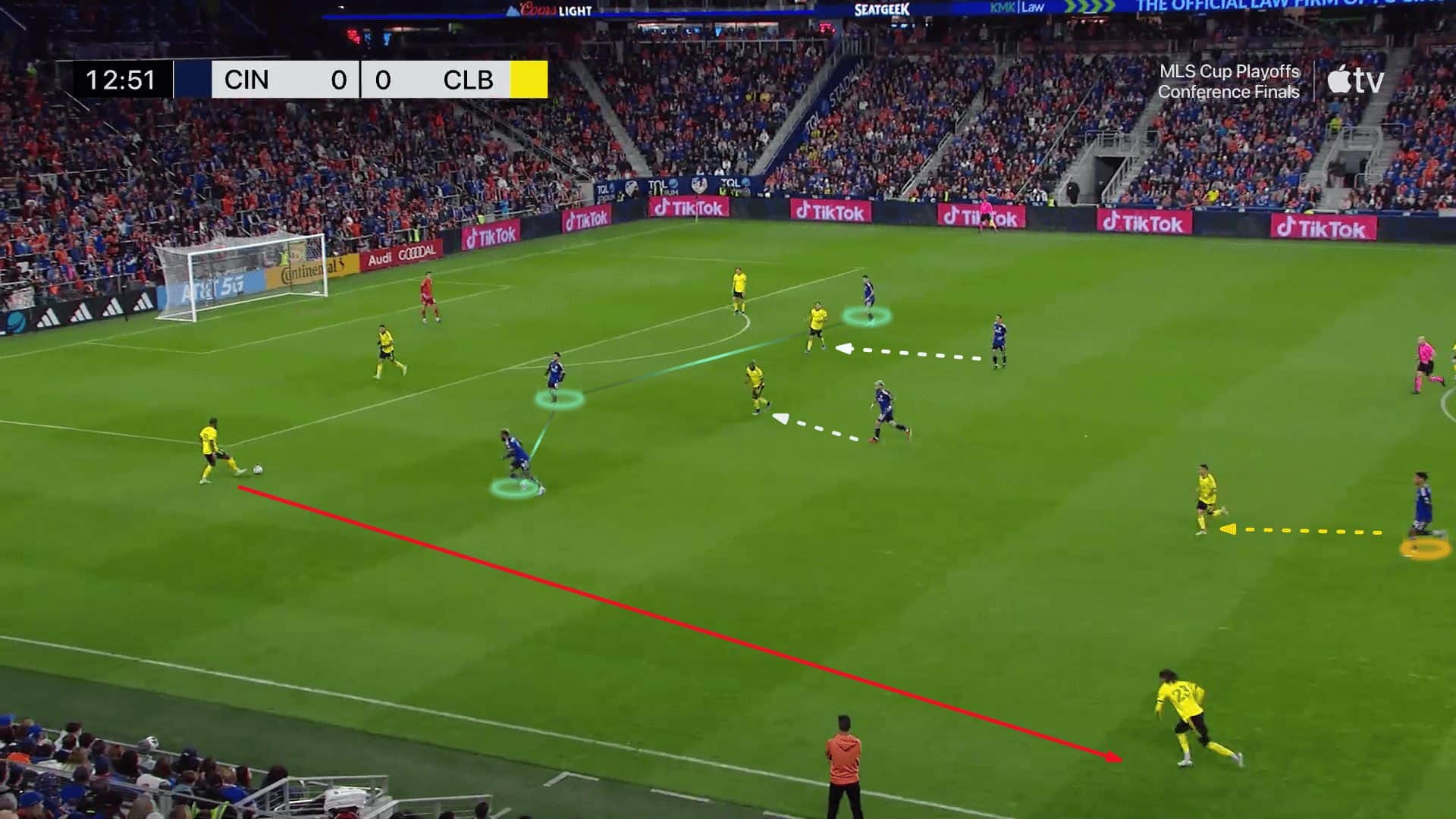
The side pressing is clear, as in the two photos below.
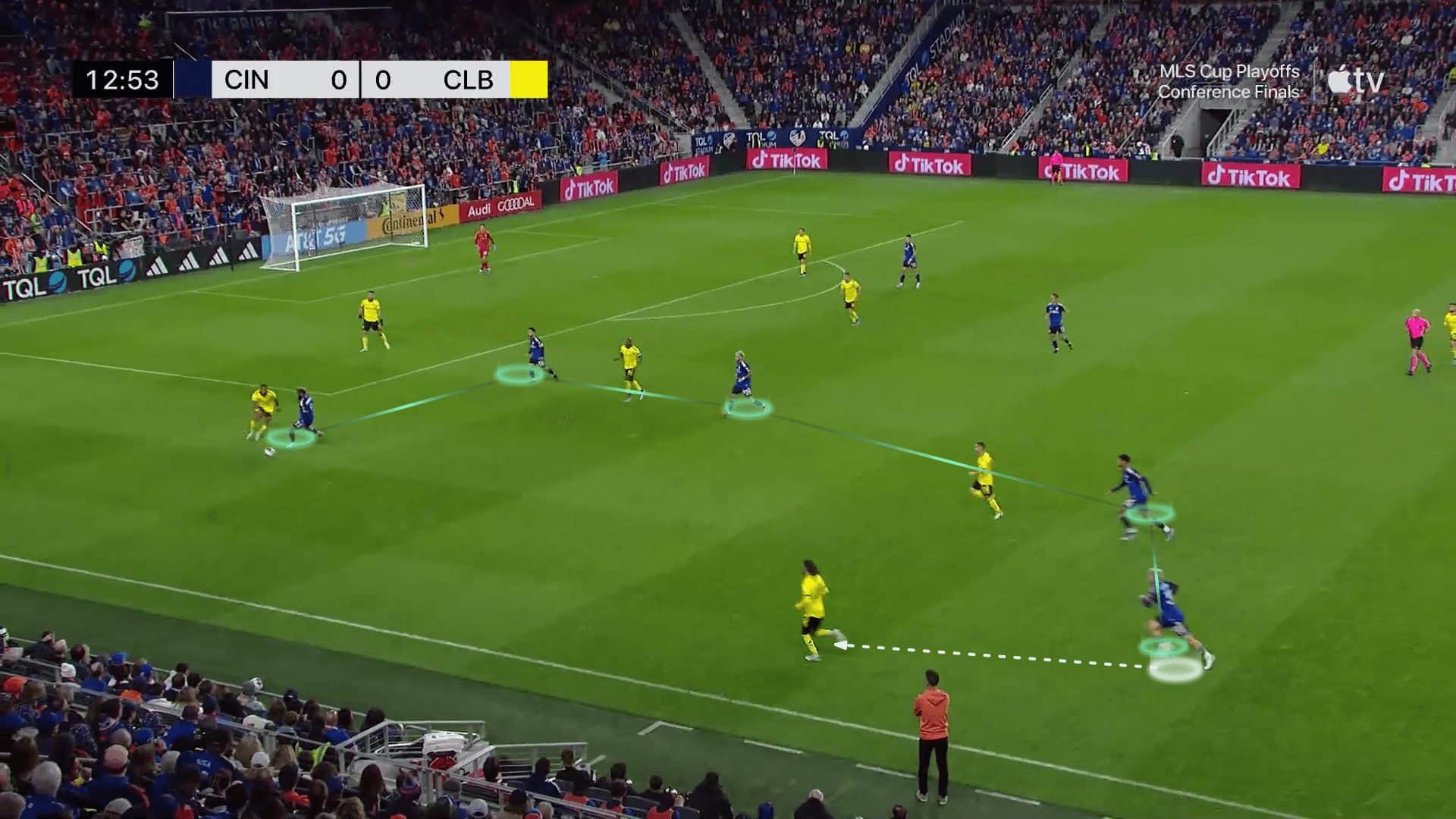
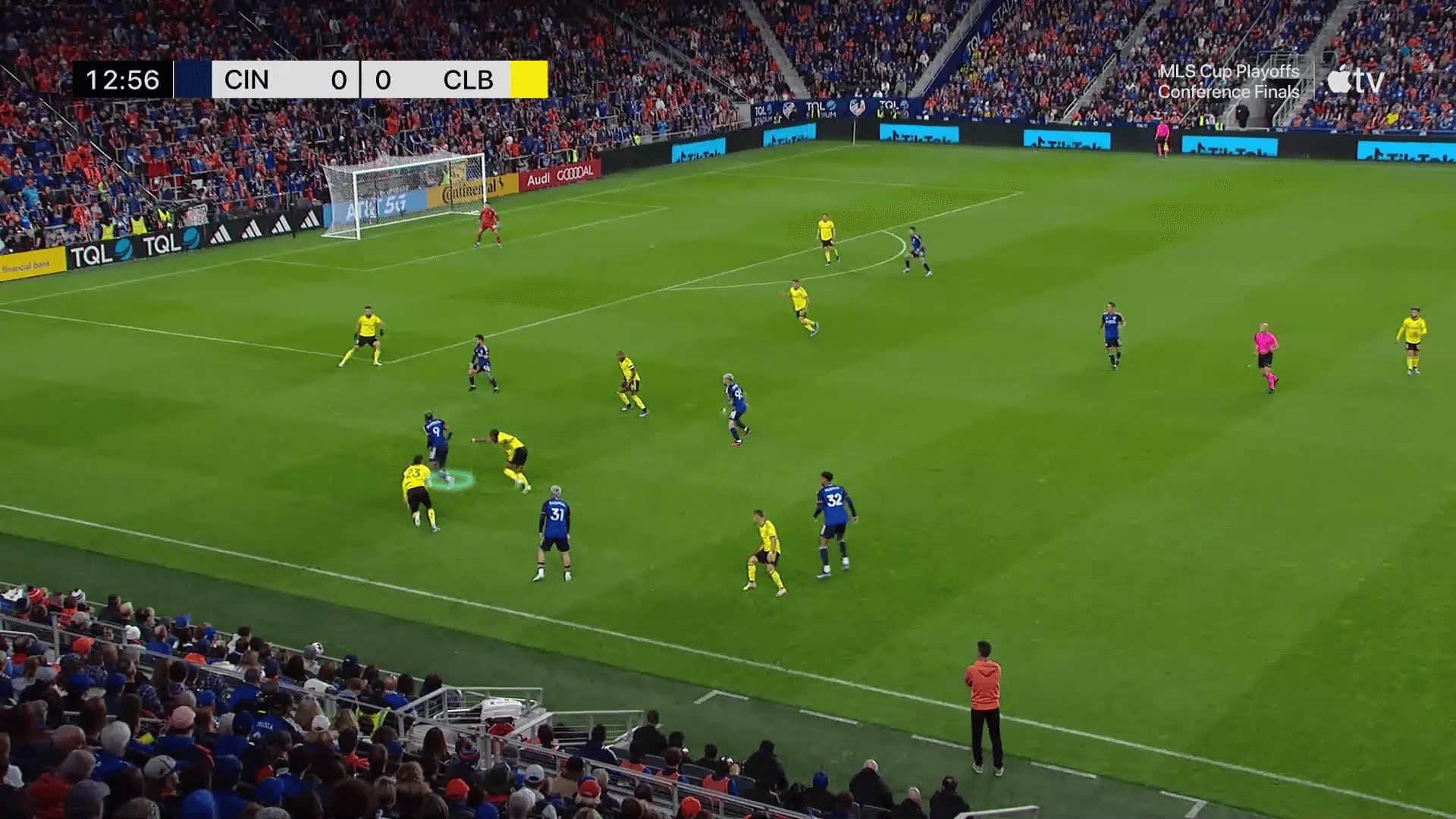
But this coach is excellent at dealing with changes during the game, so he dispenses a pivot to put another striker. As a result, the build-up shape becomes 3-1, as shown below, but why is the highlighted inside forward free?
As we said, the opponents play with five at the back, asking the left or right centre-back to go up to chase the inside forward. Still, with two strikers, this centre-back couldn’t go forward because now, we already have five other forwards, the right and left wing-backs, the two strikers and the opposite inside forward, which fixes the five defenders, as in the third photo.
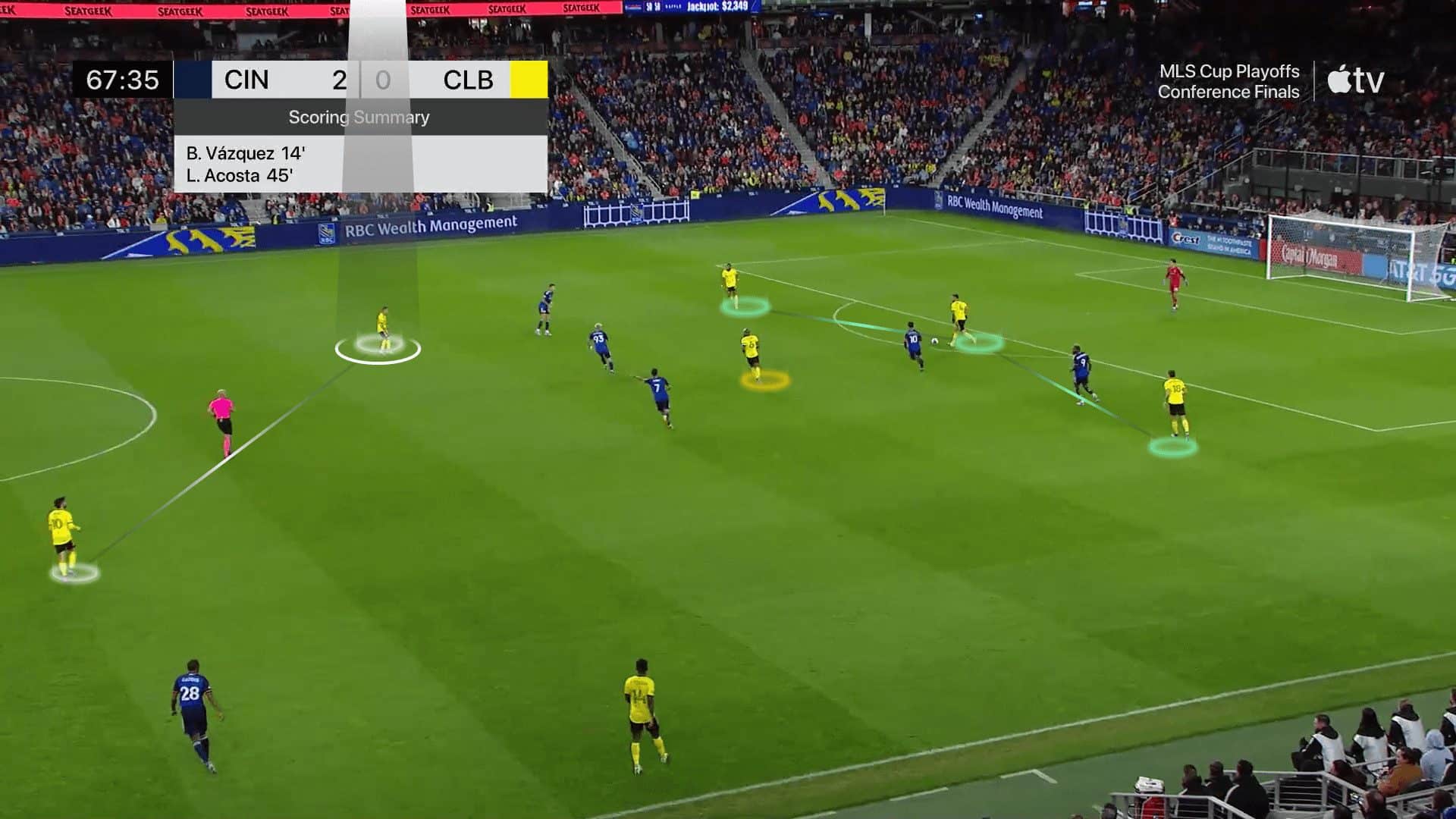
This free inside forward receives a wall pass penetrating the high press, as shown below.
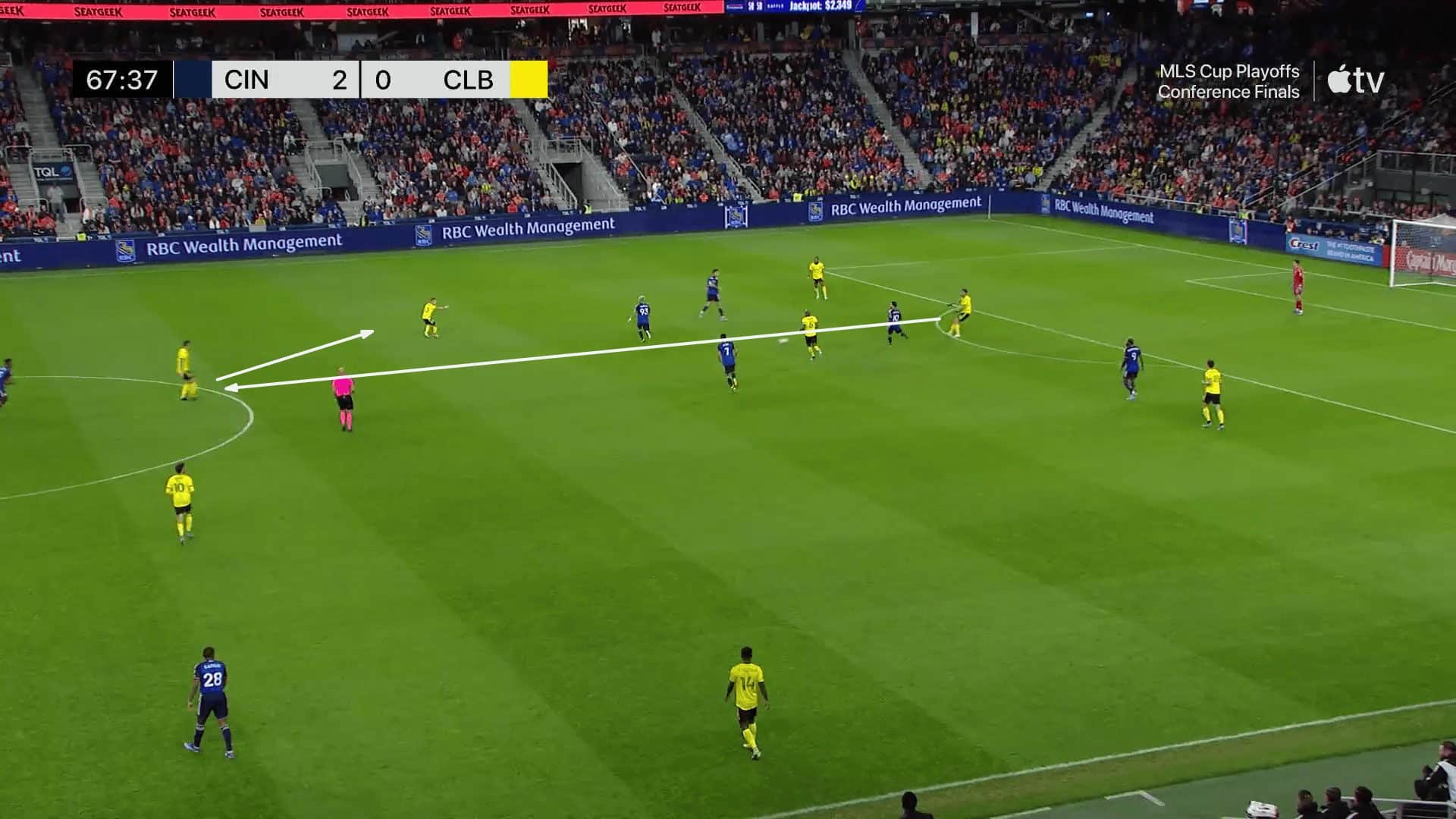
The five forwards fix the five defenders, so our highlighted man is free now.
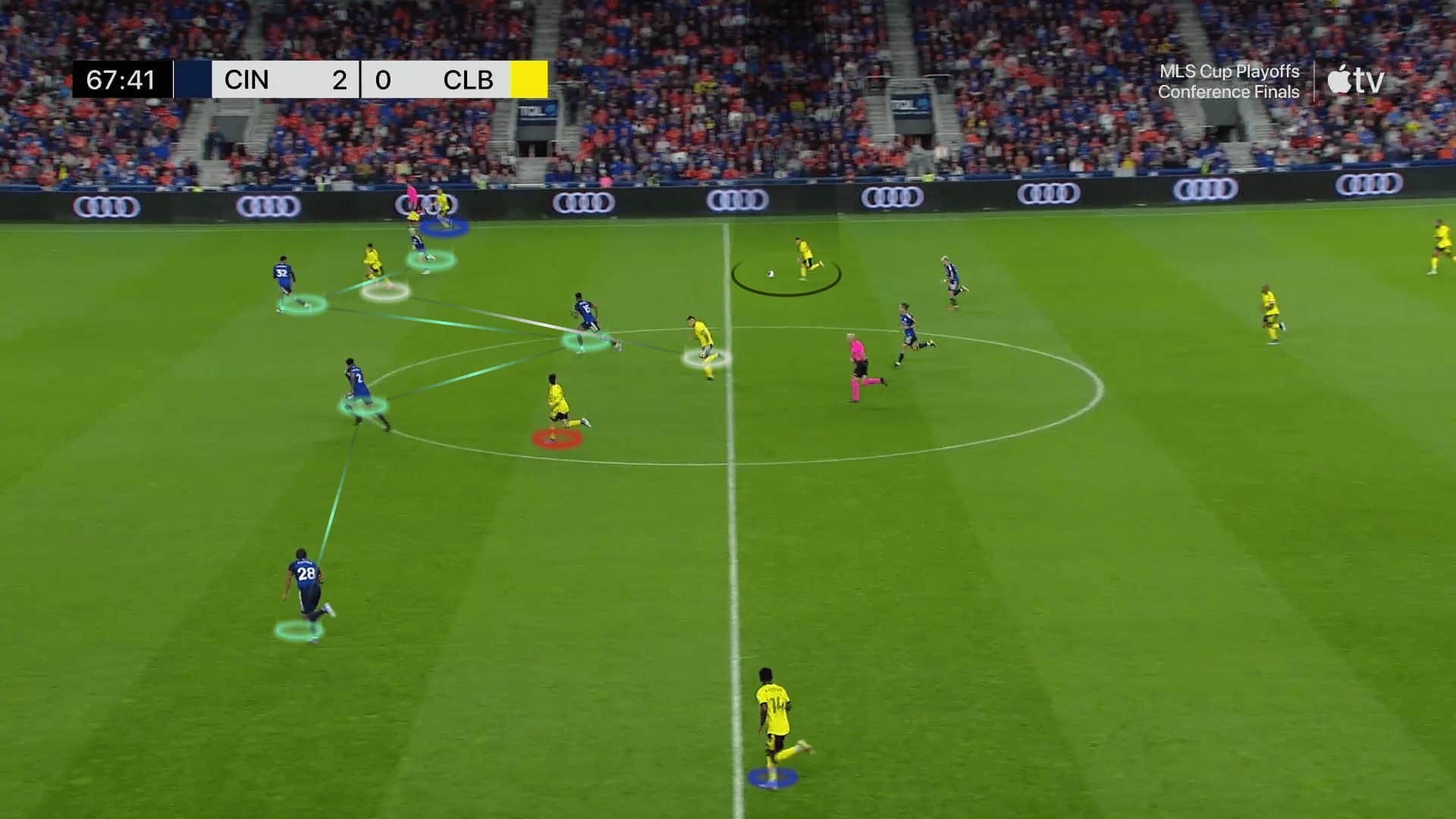
In the progression phase, they usually use the same box midfield to achieve numerical superiority against the opponent’s midfield by having a 4-v-3 situation to free one of the inside forwards.
Final third
In the final third, they utilise a lot of wing rotations by having the two pivots on the side of the ball and the three forwards standing narrowly. Meanwhile, the wing-backs stretch the pitch, as shown below, which helps them in several ways that we will mention in detail.
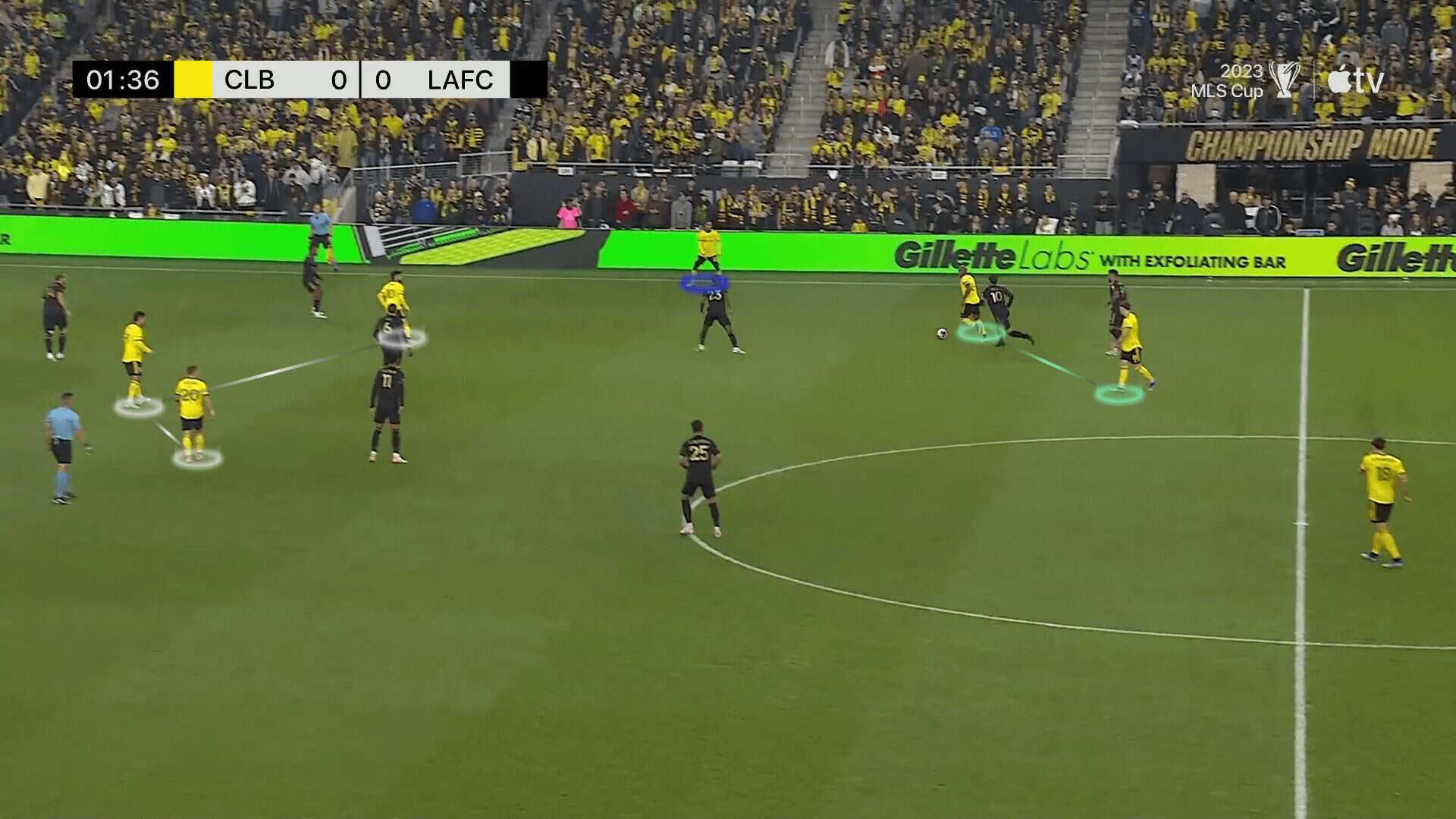
One of their ideas in wing rotations is using the centre-back near the ball this rotation by passing to the wing-back, then moving to take the inside forward’s place, who moves back to drag the defender, freeing the space for him, as shown below.
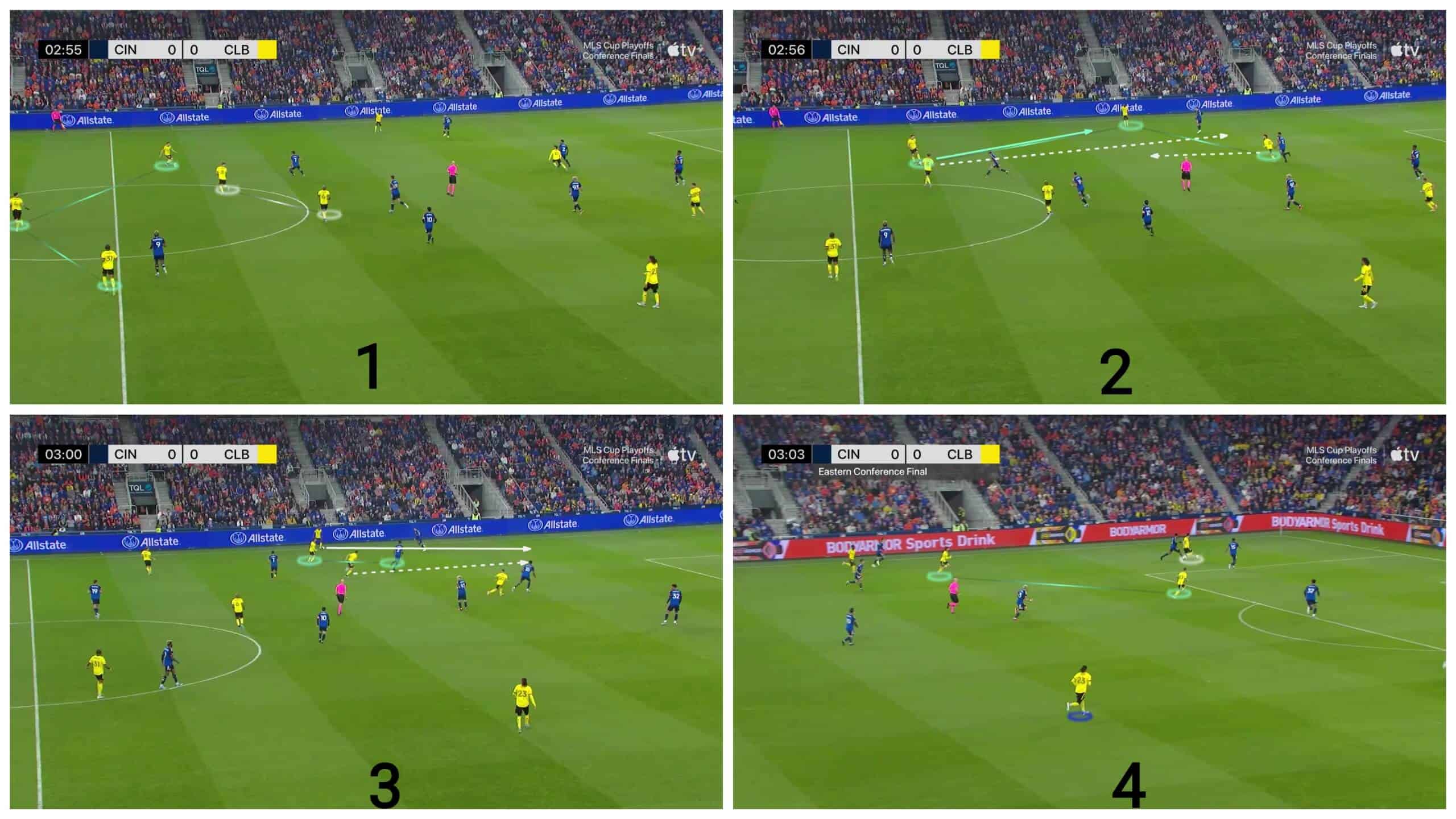
Another method they have is to play a direct long ball to the wing-back while the striker drops to drag a defender for the inside forward’s penetration instead of him, but the striker here decided to shoot directly, as shown below.
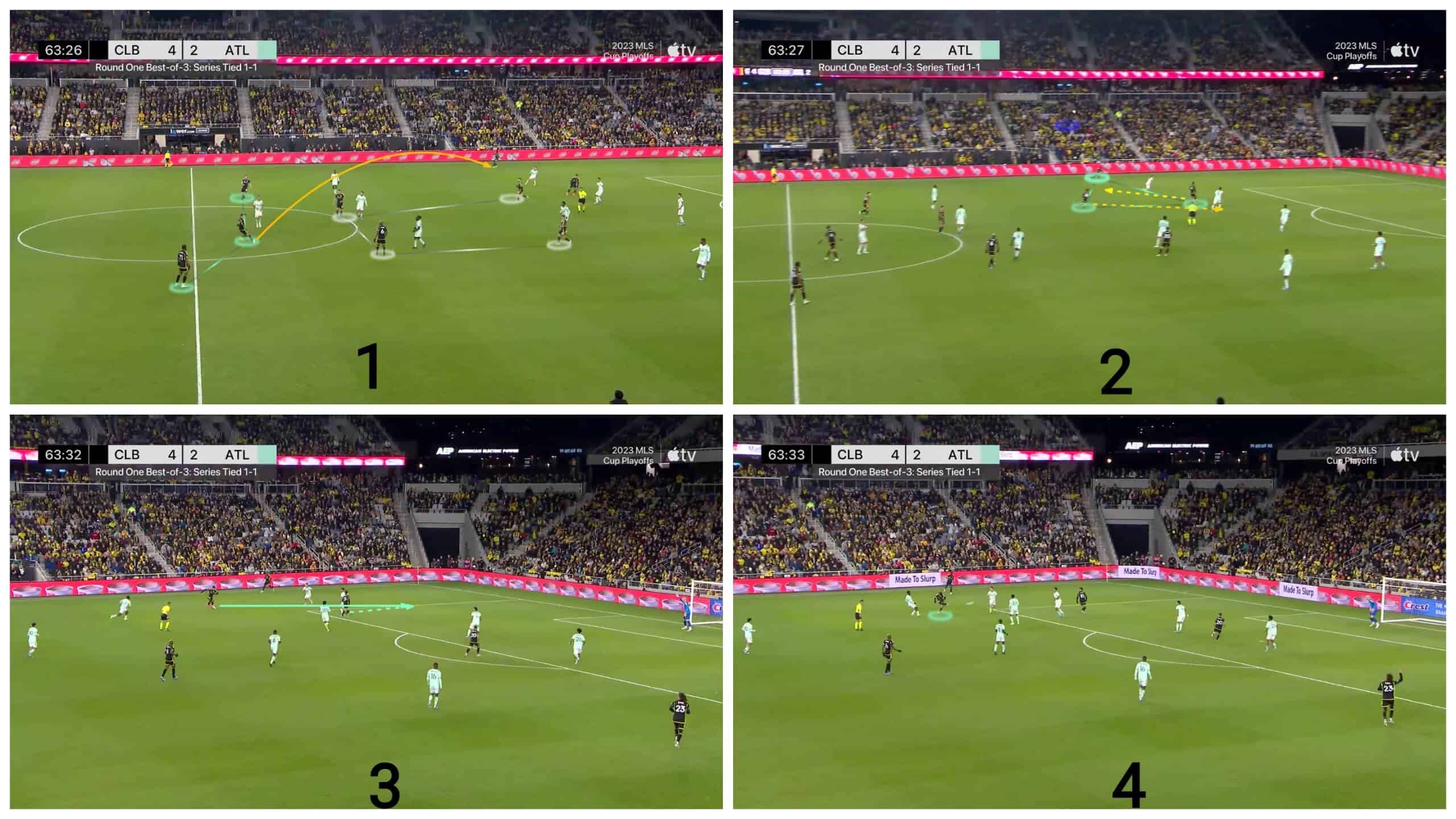
When the ball is in the middle, the three forwards keep narrow to free the space for the wing-backs, so the opponent’s full-back has two options. Some decide to chase the wing-back wide, leaving a significant distance between him and the compressed defence line due to the forwards’ narrow positions, which are exploited with a through pass, as in the first two photos below, but the pass is inaccurate, so the defender gets it.
Some decide to stay narrow so the wing-back has ample space to receive the ball in the outer flank, as shown in the third and fourth photos, but the midfielder decided to pass in this case.
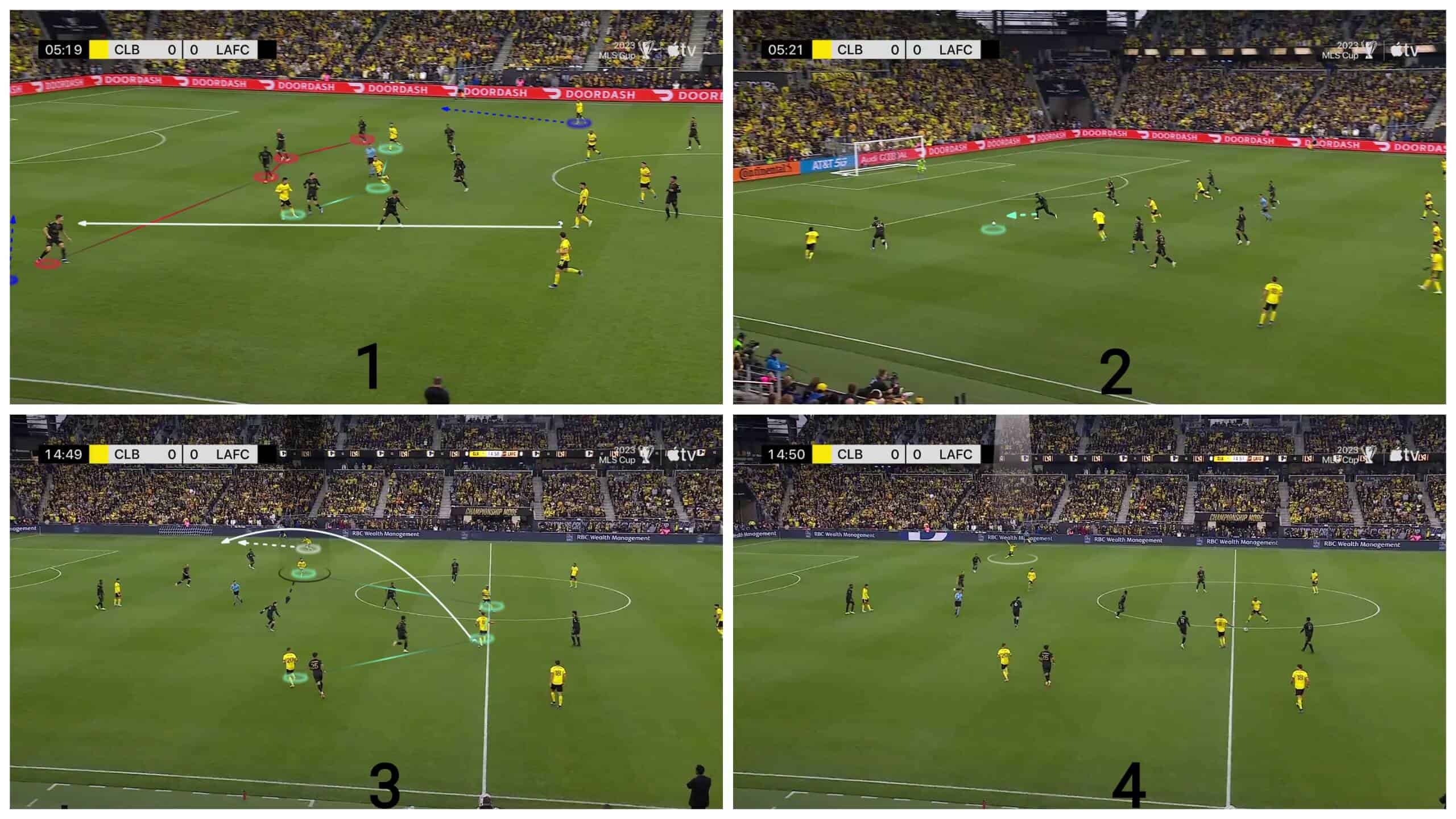
High press
They usually press high to chase the ball and get it back. They prefer to use the side-pressing method with the three forwards narrowly asking the central one to press the opponent’s holding midfielder, who isn’t always the striker, because they sometimes ask one of the two wingers, inside forwards, to do that, especially Carlos Vela, while the other two closing the centre and ready to press the opponent’s centre-backs. The wing-back near the ball goes up while the other one stays with the defence, as shown in the first photo below.
In the second photo, the opponent passes to the other side, so the shifting happens between the two wing-backs, and then they trap the opponent near the line when we have no option except passing to the full-back, as in the third and fourth photos.
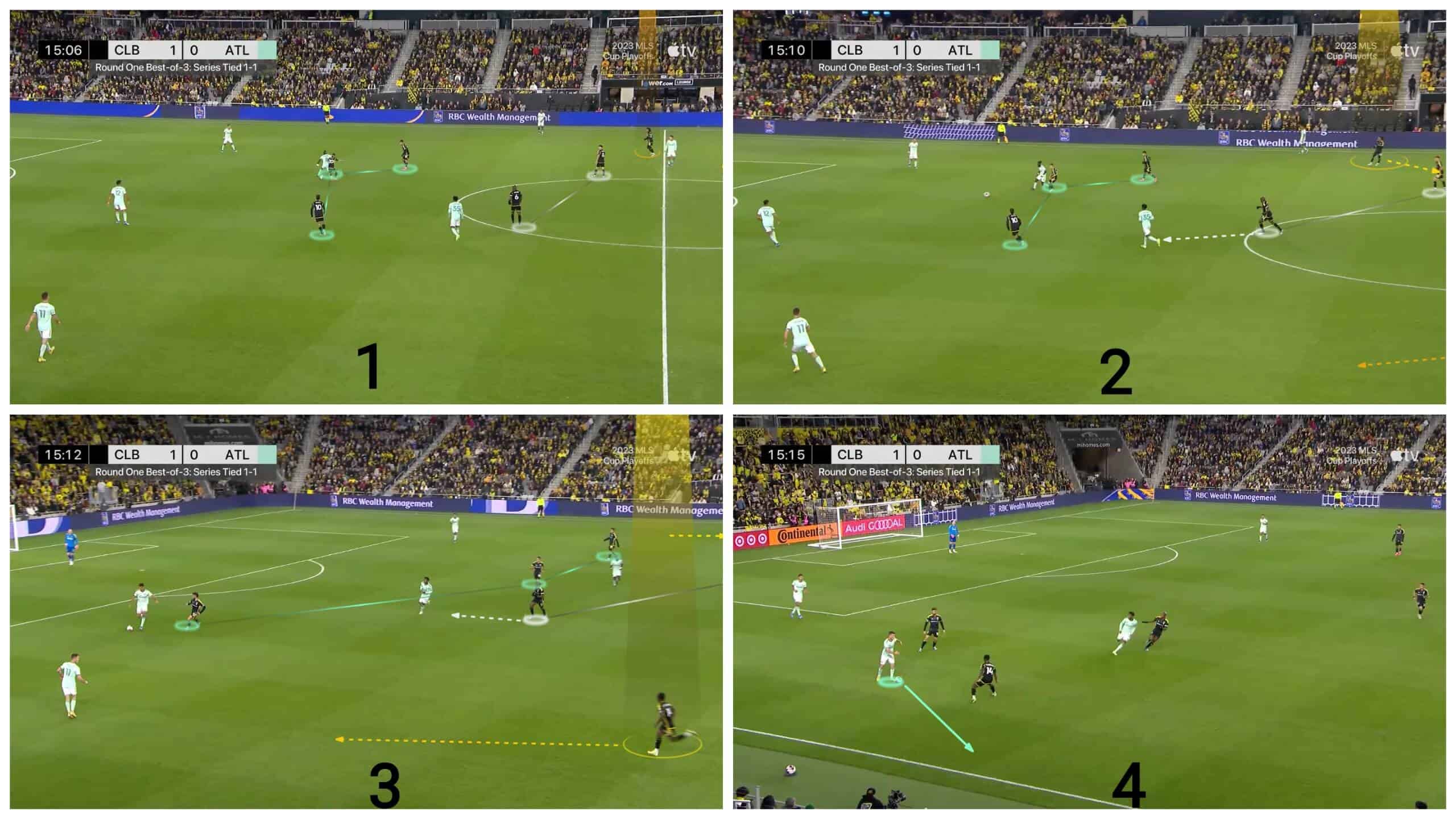
The ball goes outside while the left centre-back is ready to press, as shown below.
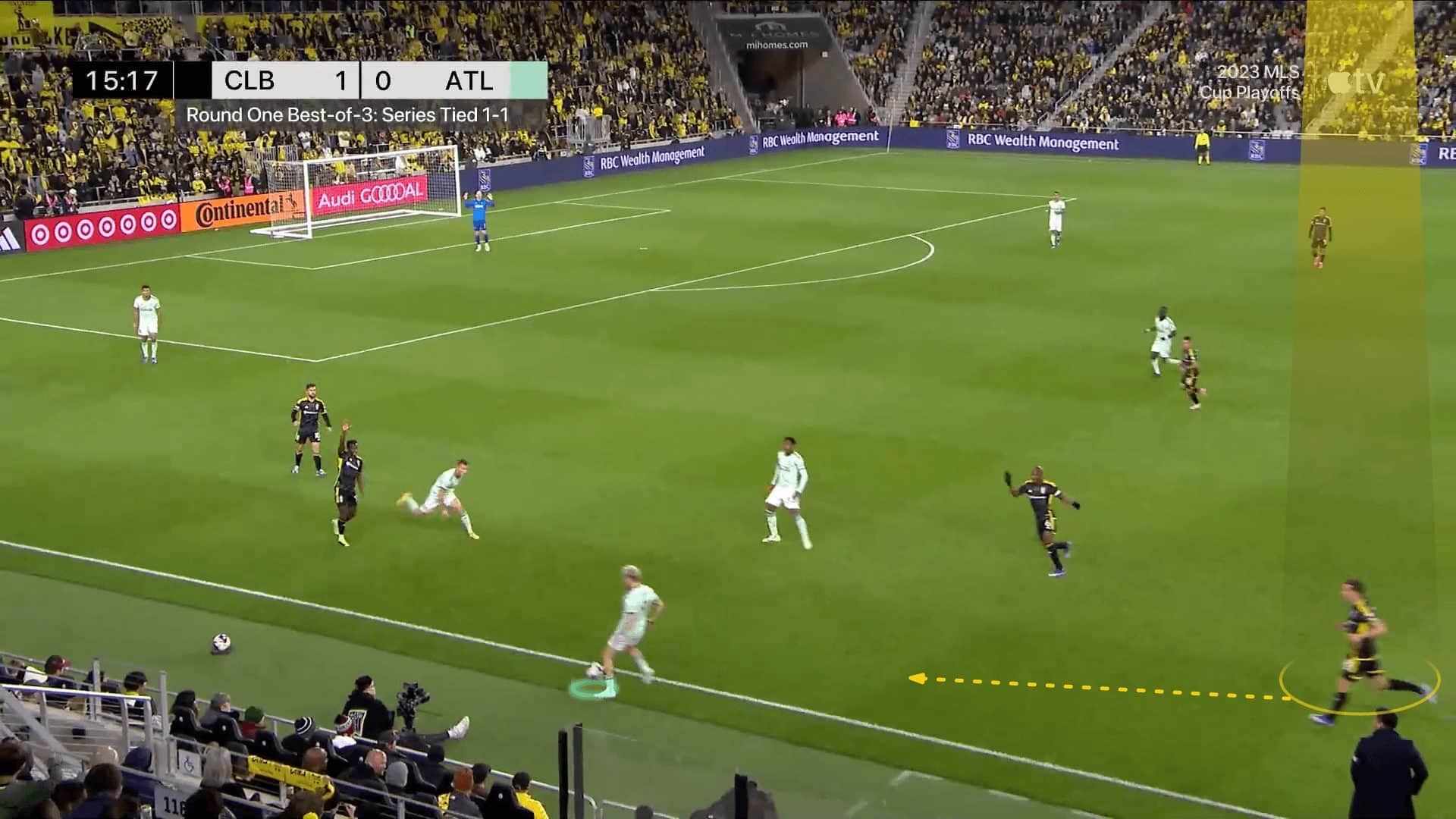
In the first two photos, the same side pressing is done by the same scheme and the same shifting between the wing-backs. In the third photo, the right forward presses the goalkeeper with a curved run to close the passing lane to the left centre-back, forcing him to pass the ball inaccurately, as shown in the fourth photo.
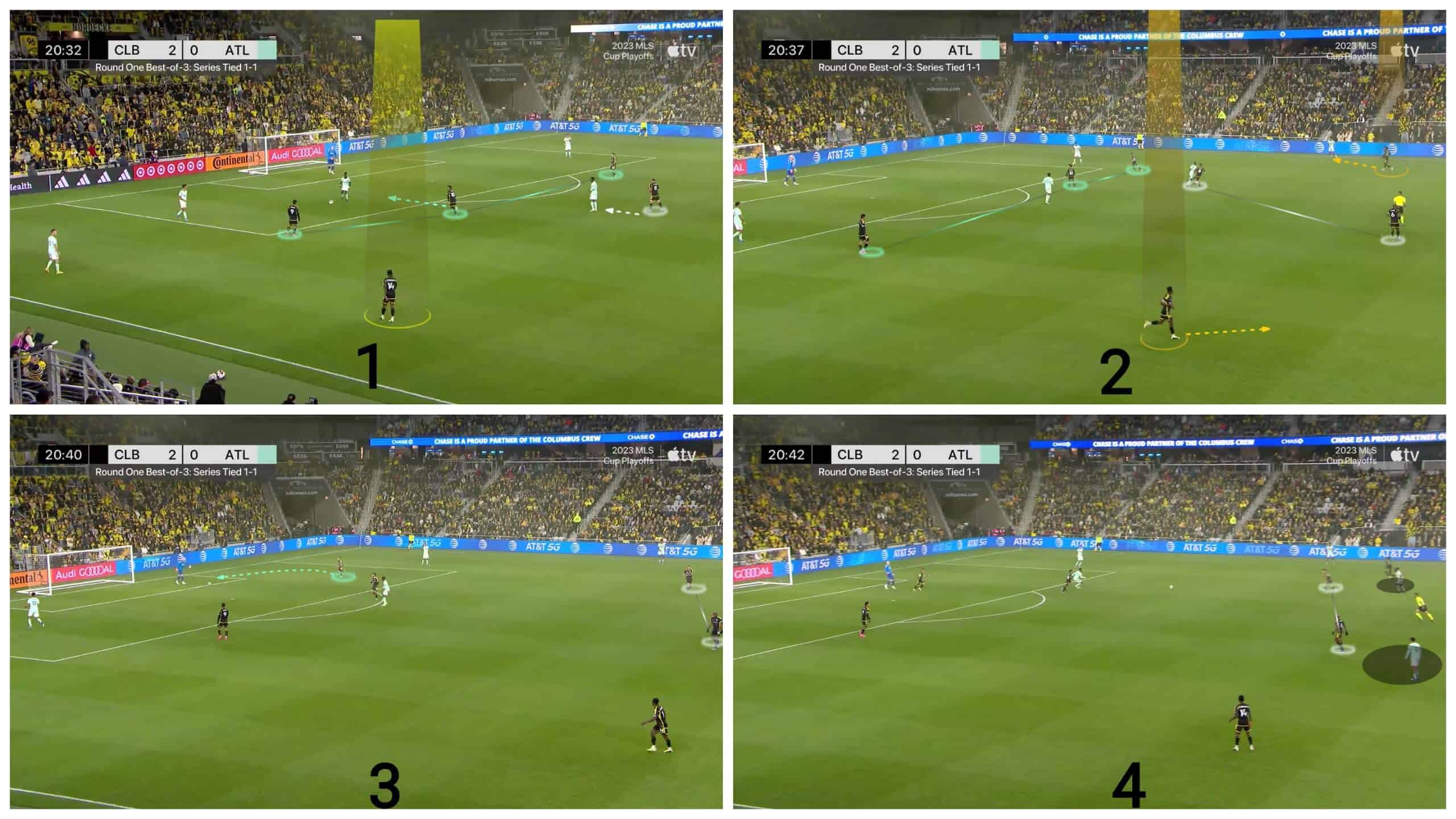
They get the ball in a dangerous area with many options, as shown below.
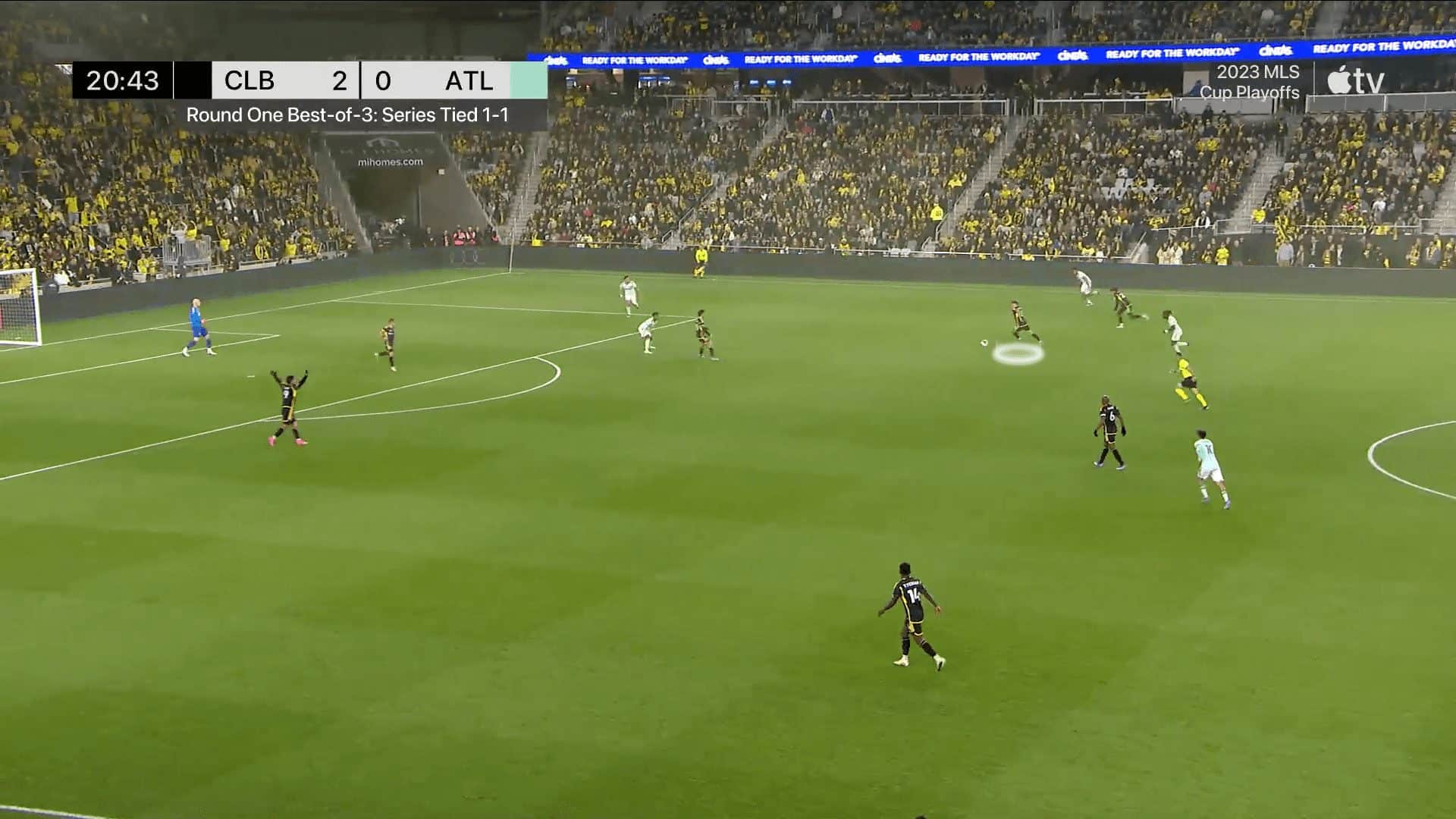
Here, the same pressing scheme with another attacking midfielder dropping, but one pivot follows him, then pressing the goalkeeper shadowing this midfielder in his back, as shown in the two photos below, forcing the goalkeeper to play a long ball.
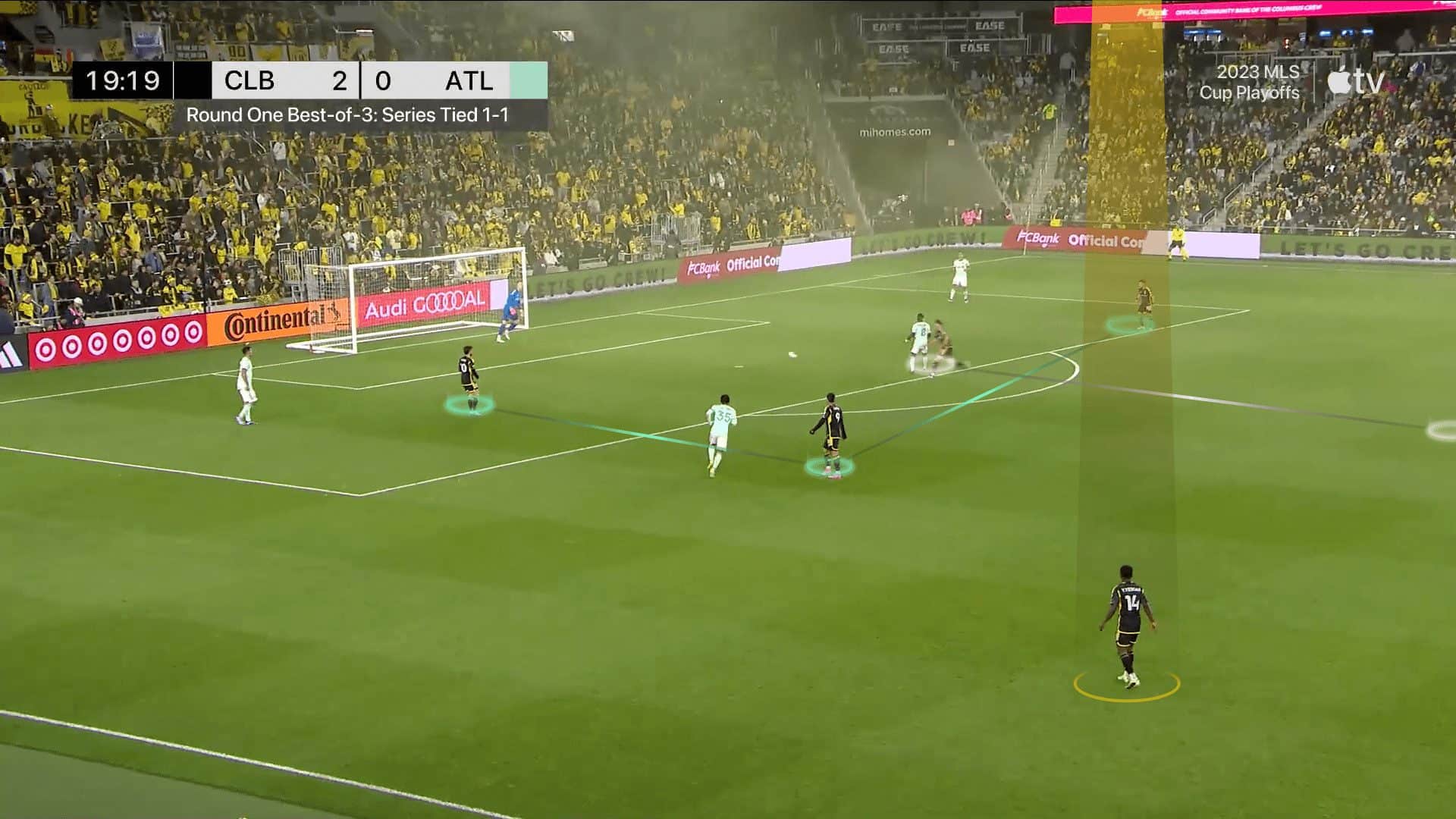
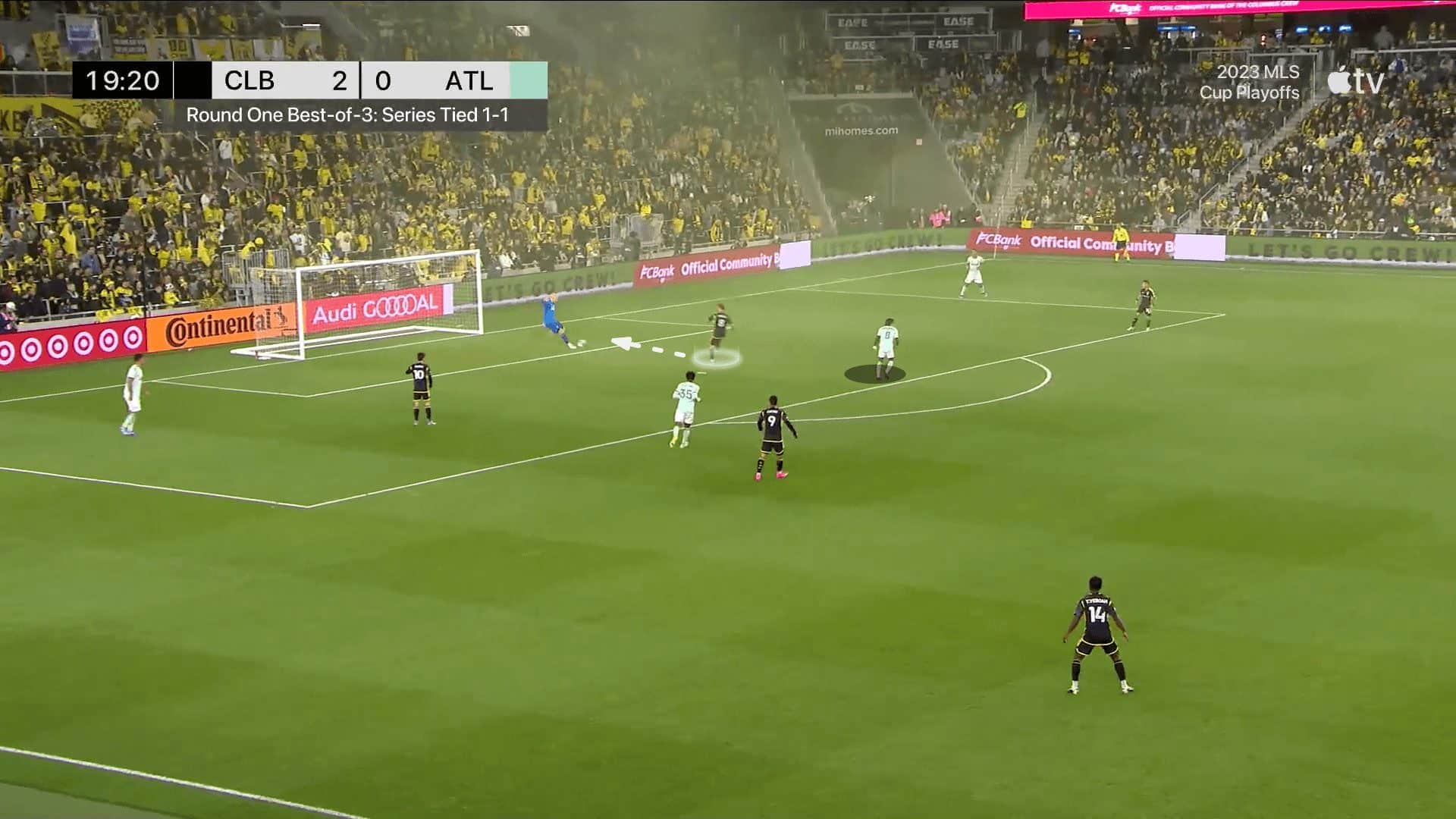
But let’s know why this long ball could harm them. When the ball is in the middle with the goalkeeper, the two wing-backs are a little high in the stage of shifting, meaning that there were 3-v-3 in the back, but why didn’t one defender follow the striker who receives the ball easily, then pass it to the full-back who crosses it to the wing in front of him? This forces a pivot to run towards him, leaving the midfielder behind him, as in the second and third photos.
The answer is in the fourth photo: they ask the two wingers to stand very widely to drag the right and left centre-backs with them so the central centre-back couldn’t leave this large area in the middle to chase the striker.
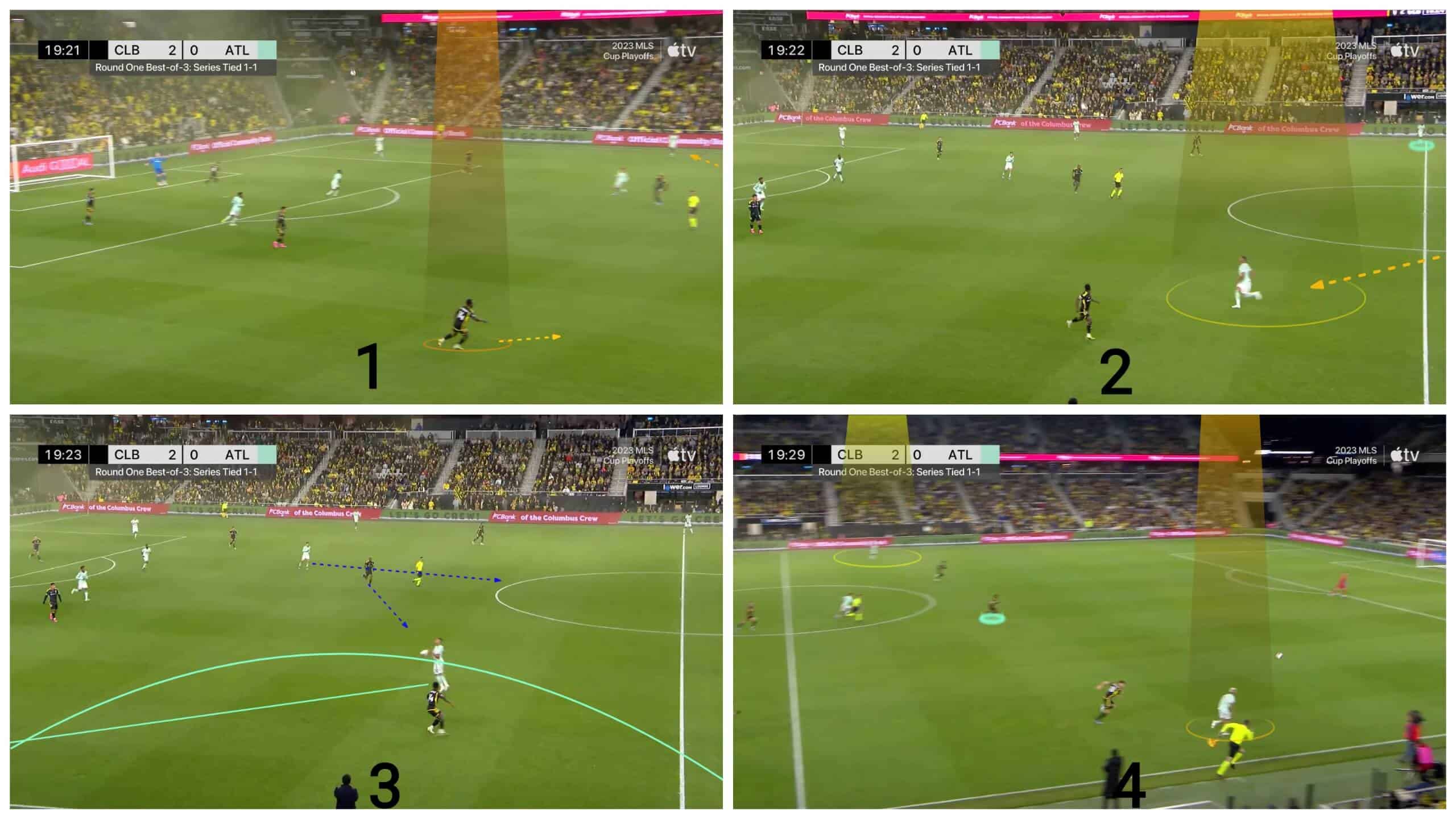
Mid-block and low-block
The 5-2-3 shape often performs their mid-press, but they have a problem leaving the area between the defence and the mid too large, so when the left full-back goes up in this space, putting the wing-back in a problematic situation, as in the first and second photos below, it could harm.
In the third photo, the right centre-back helps him well, but it is better to make sure this process is done in a small space because the opponent midfielder can exploit this area caused due to shifting. Luckily, the opponent decided to cross the ball, as in the fourth photo.
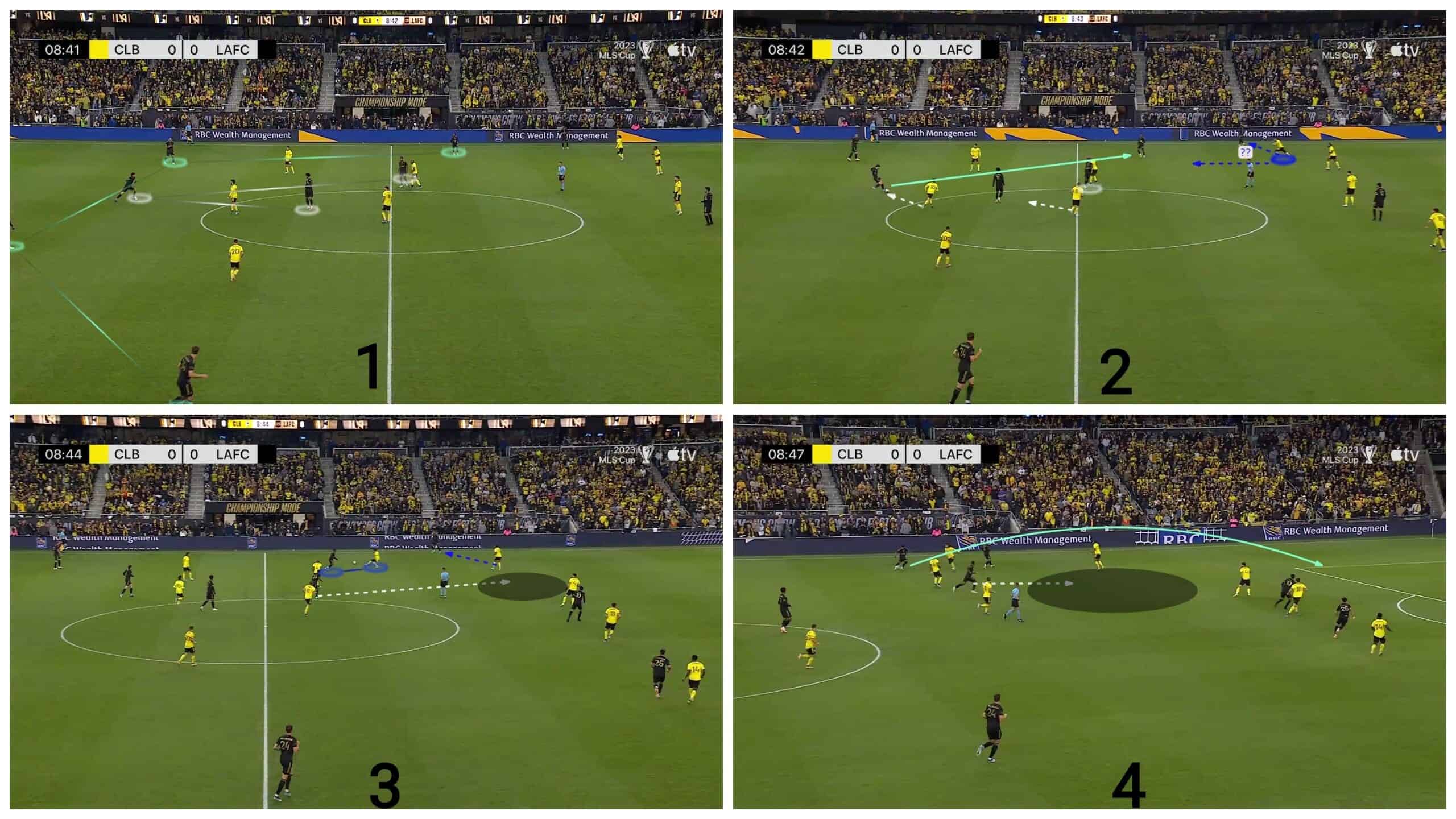
When they have to drop into a low block, they form a 5-4-1 shape that has typically proven quite solid and difficult to break down.
Attacking transitions
They are effective in attacking transitions in several ways. One of them is to make the centre-back perform a long ball to the striker, who goes directly to the opposite side with the inside forward, as shown below.
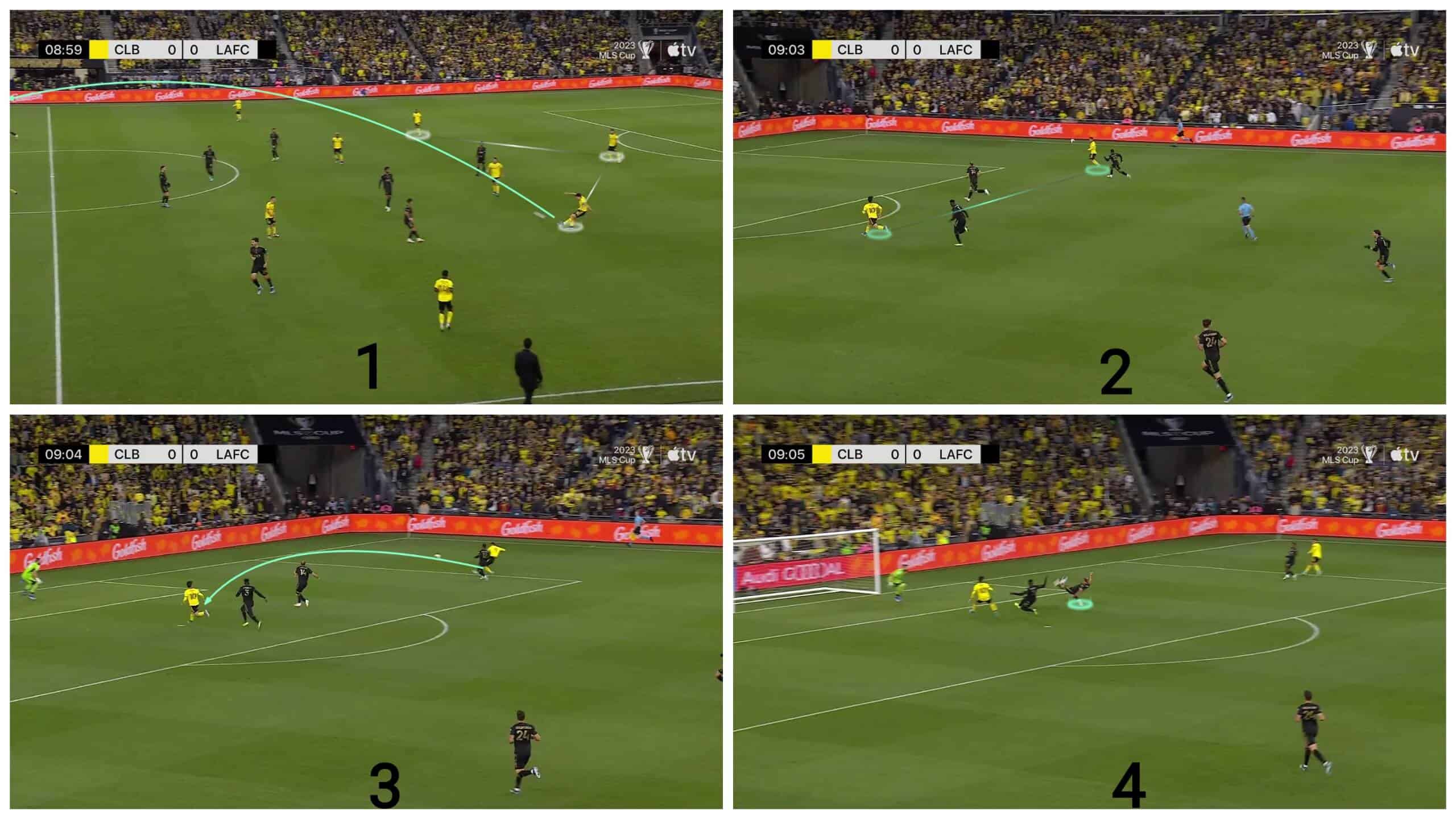
The most dangerous thing they have in attacking transitions is that they don’t need time to rearrange themselves because everyone can read the game and stand in the nearer positions they can based on their teammate’s position, as we will explain.
In the first photo below, the right centre-back gets the ball back while the 5-4-1 formation is shown, so he passes it to the right winger, inside forward, then moves quickly without thinking to fill the gap, so he stands as a striker while the striker stands in the right wing-back position who stands at back to cover the advancing right centre-back. The left wing-back and the left inside forward are dashing to be ready for the switch, as in the third and fourth photos.
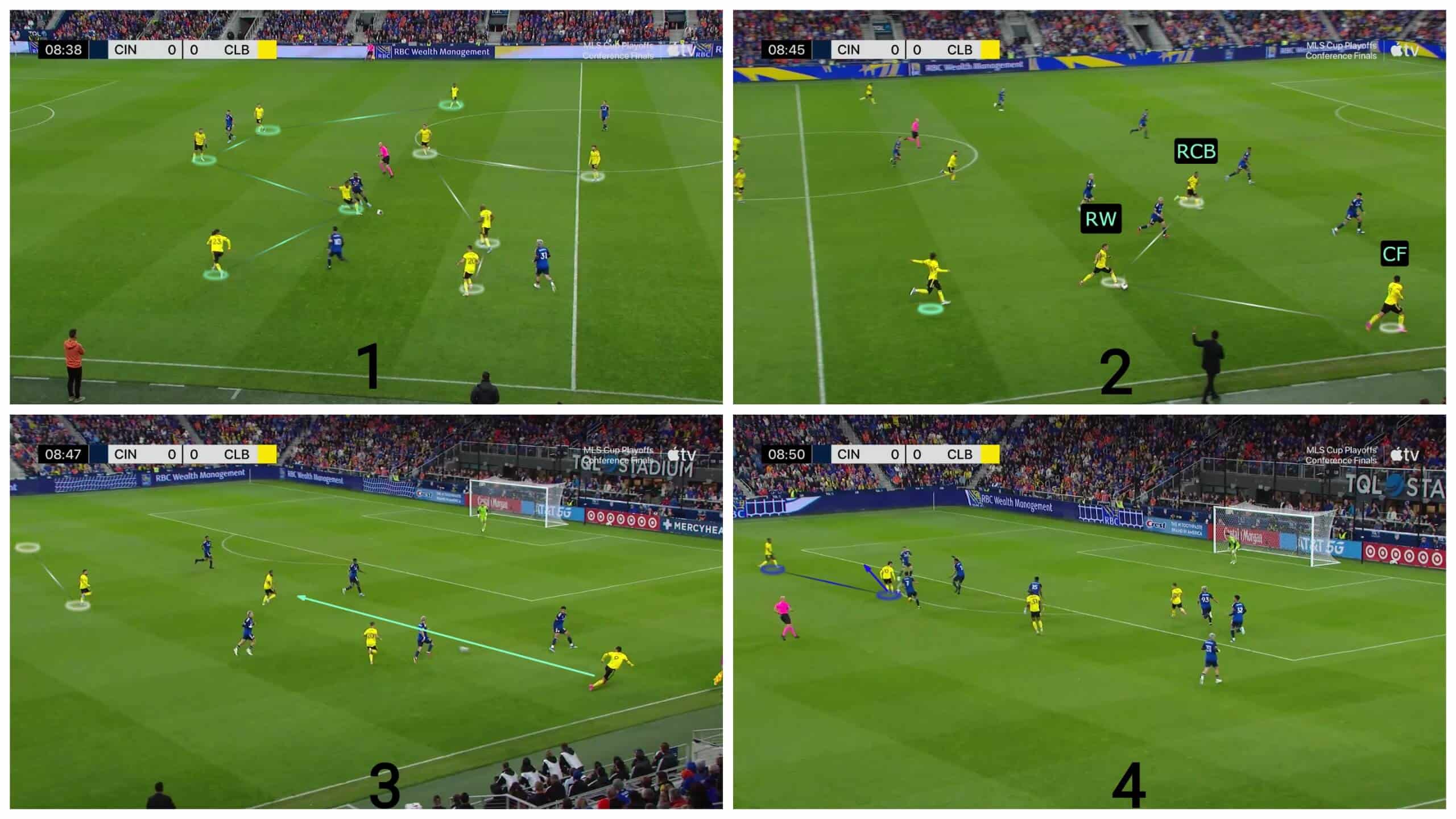
Defending transitions
As world-class attacking-style teams, they prefer to get the ball back quickly with tough counter-pressing.
In the photo below, you can see six players around the ball; four are already here, while two are running, closing the passing options. This is also a good use for the narrow scheme they use near the ball, as mentioned above.
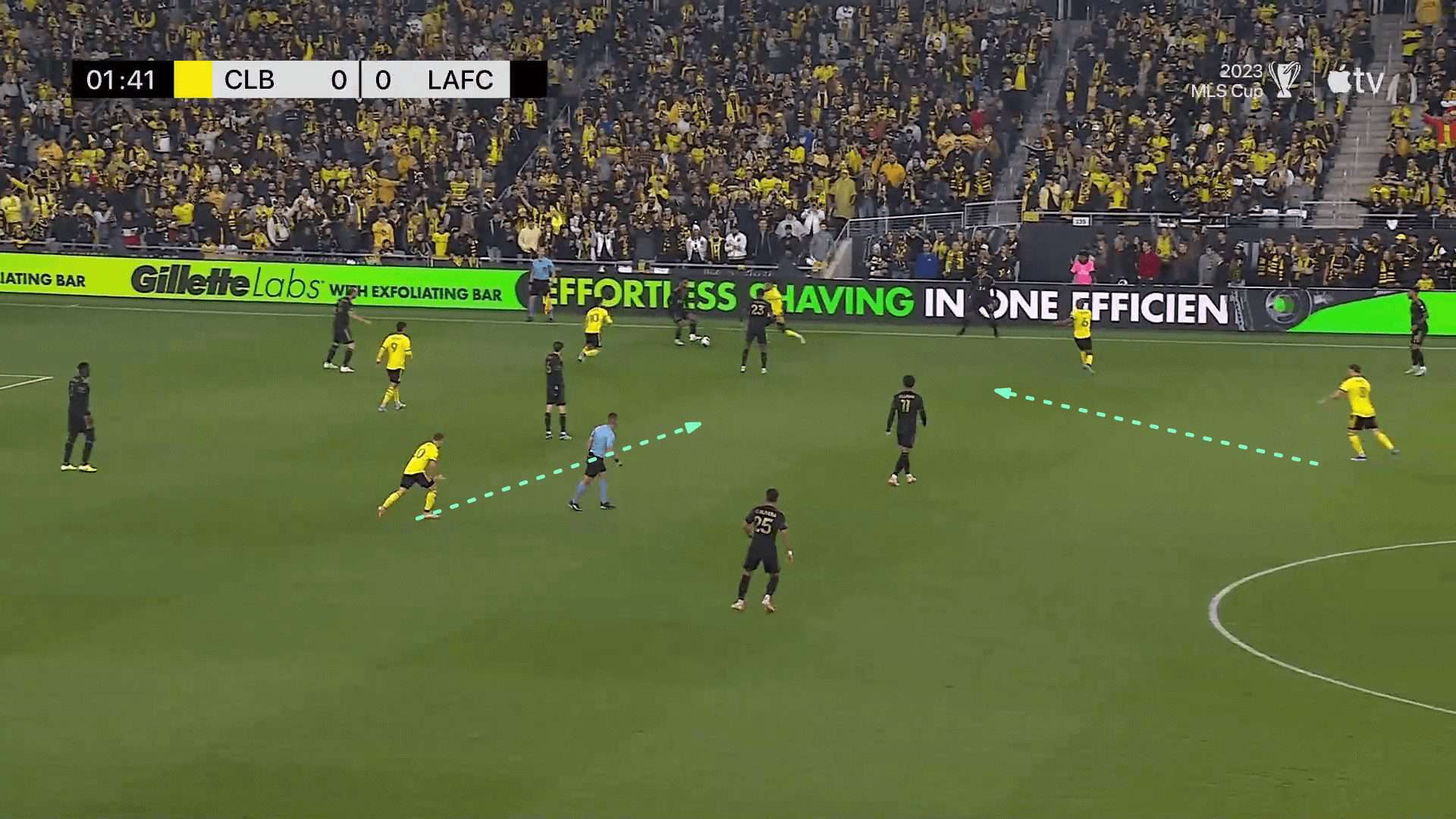
They could close all options for the opponent, as shown below.
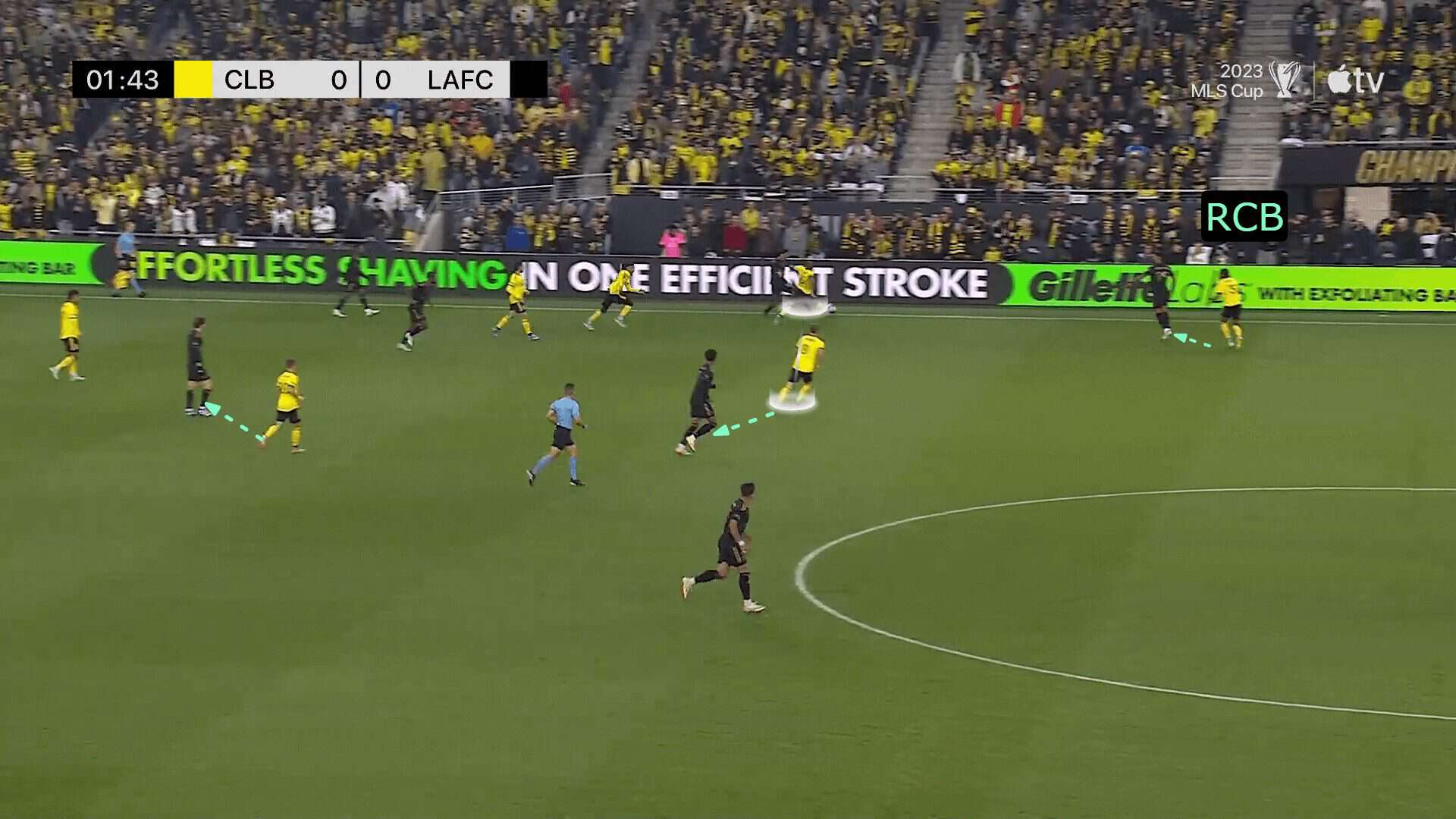
But they need help in the rest defence on the opposite side of the ball with risky actions from the defenders.
In the first photo, the right centre-back passes the ball to the right wing-back, then he decides to move forward to receive a double pass, but the wing-back passes it inaccurately, as in the second photo. This action leads to making the central centre-back shift to cover behind him, but the left centre-back can’t shift because of the advancing left wing-back, so these two large spaces are created.
In the third photo, the left wing-back didn’t come back while the forward still fixing the left centre-back in this dire situation where the forward can get the ball to this inside area or pass it to the coming player in the red arrow.
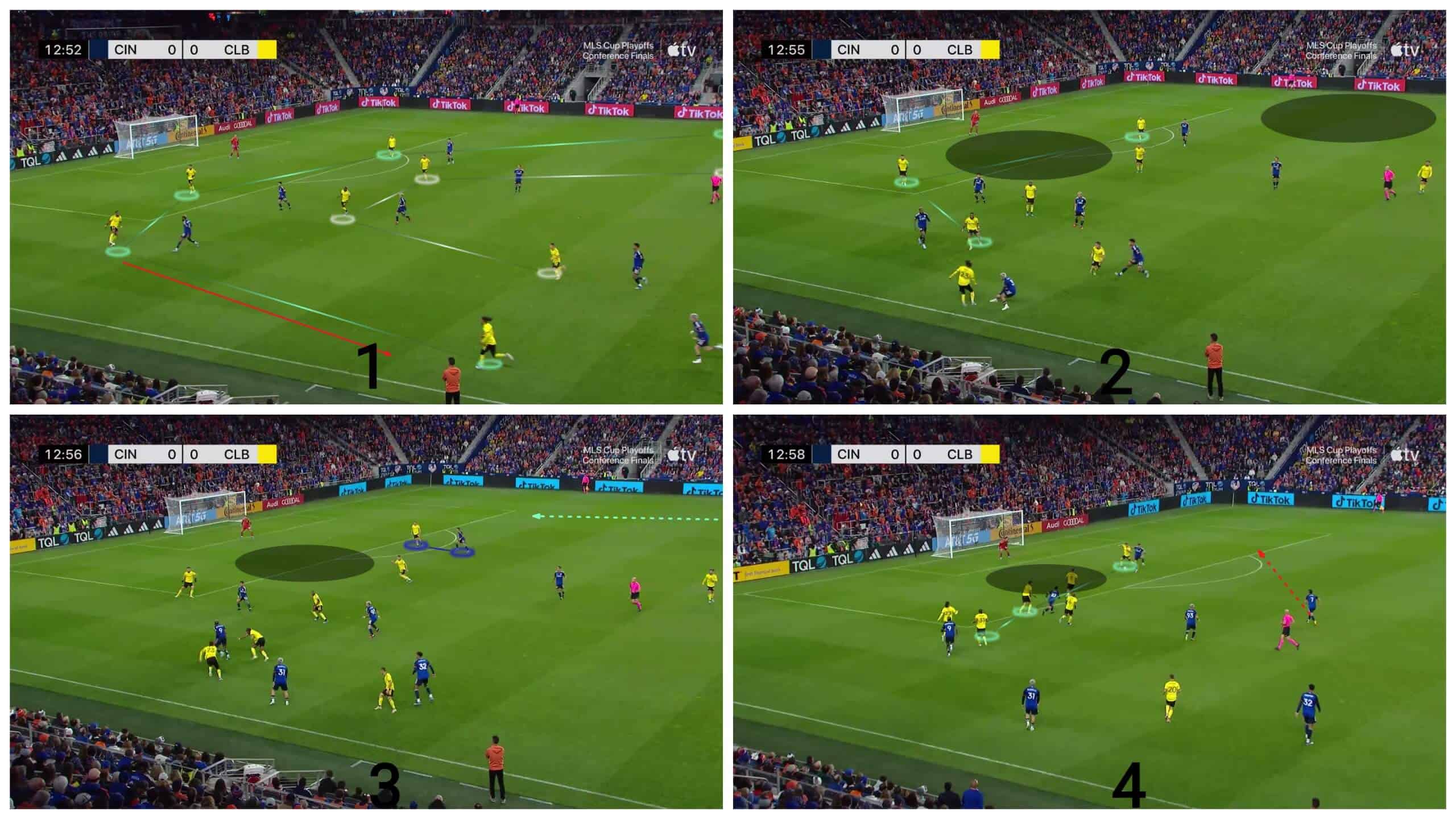
The attacker decides to go into the eternal area while the wing-back is still out of the shot, so the result is a goal.
Conclusion
In this analysis, we have shown many tactics that Wilfried Nancy has used with Colombus Crew in their attacking phases, including the build-up, progression and final third, in their defending phases, including high press, mid press and low block.
We have also explained how they deal with attacking and defending transitions with their advantages and disadvantages in each phase.

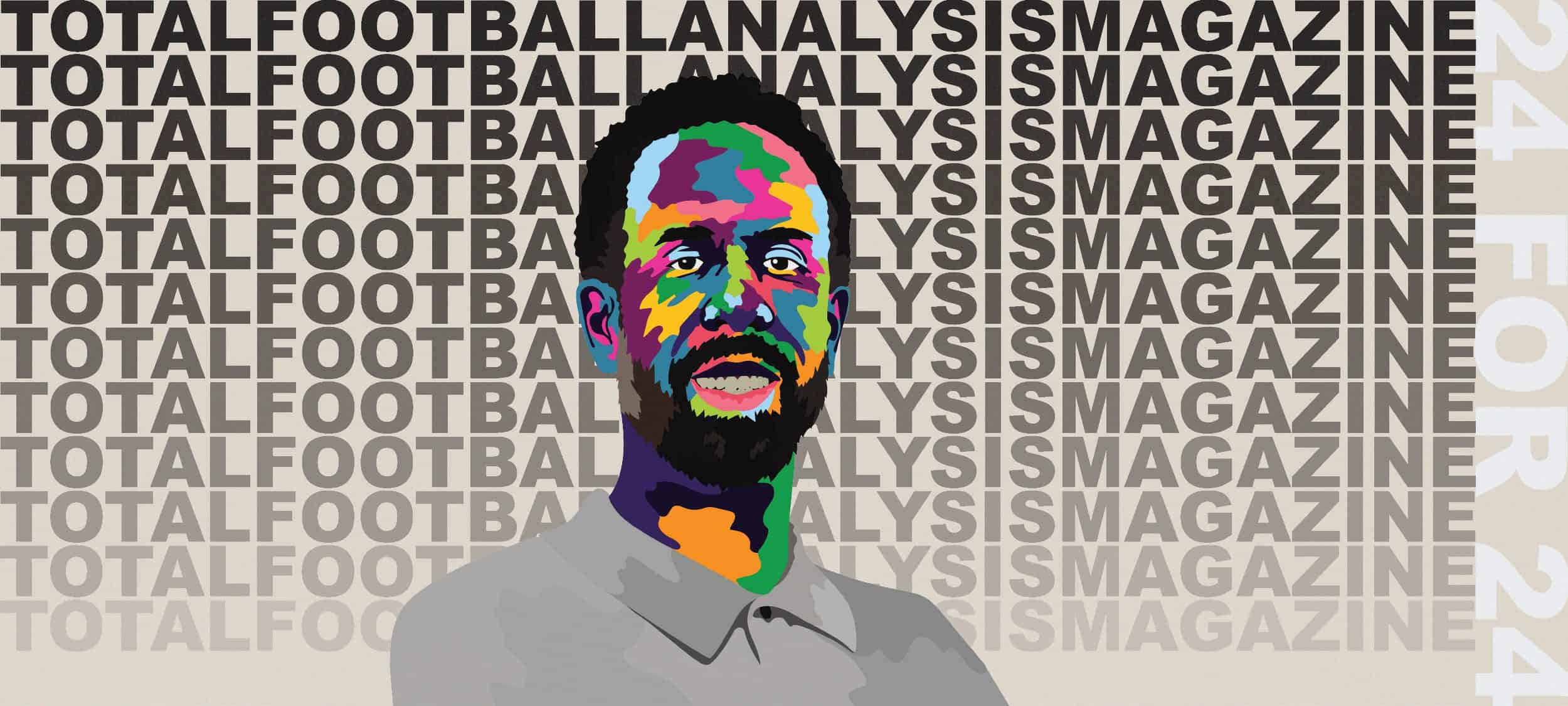




Comments